Tom's Hardware Verdict
The new Corsair RM1000x achieves high performance, and it keeps its noise output low. Moreover, it is highly efficient at light loads and comes with a top-quality fan.
Pros
- +
+ Full power at 47 degrees Celsius
- +
+ High overall performance
- +
+ Quiet operation
- +
+ Fully compliant with ATX v2.52
- +
+ Highly efficient at light loads
- +
+ Long hold-up time
- +
+ Low inrush current
- +
+ Magnetic Levitation fan
- +
+ Loads of cables and connectors
- +
+ Fully modular
- +
+ 10-year warranty
Cons
- -
High OCP triggering points on the minor rails
- -
A small overall efficiency boost would be nice
- -
In cable capacitors
- -
Small distance between peripheral connectors
Why you can trust Tom's Hardware
The Corsair RM1000x achieves high performance, and it isn't noisy, despite its increased max power output. It uses quality parts, including Japanese caps and a Magnetic Levitation fan, ideal for operation under high operating temperatures. It is fully compatible with the newest ATX spec (2.52), so among others, it offers high efficiency under super-light loads, and it also supports Microsoft's Modern Standby, which allows for speedy wake-from-sleep times (you also need a compatible motherboard). This is one of the best 1000W Gold PSUs, and if it weren't for the Corsair AX1000, it would easily get a spot in our best PSU's picks article. A strong opponent for this product is the Super Flower Leadex V Gold with a similar capacity.
Corsair decided to revamp its more successful line in the upper-range category. The RMx models managed to steal the spotlight from the higher-end RMi units since they offered a better performance per price ratio. The last time Corsair refreshed this line was three years ago, in 2018. PSUs have a much longer lifetime than other IT products, but in this case, Jon Gerow, Corsair's R&D PSU director, decided that it was high time for some changes.
Besides the change from a rifle bearing to a more durable (and more expensive as well) fan, the new RMx units are fully compatible with the newest ATX spec, so they have over 70% efficiency with 2% load, and the PWR_OK delay is within the 100-150ms region, to support the Alternative Sleep Modes (ASM), including Microsoft's Modern Standby mode.
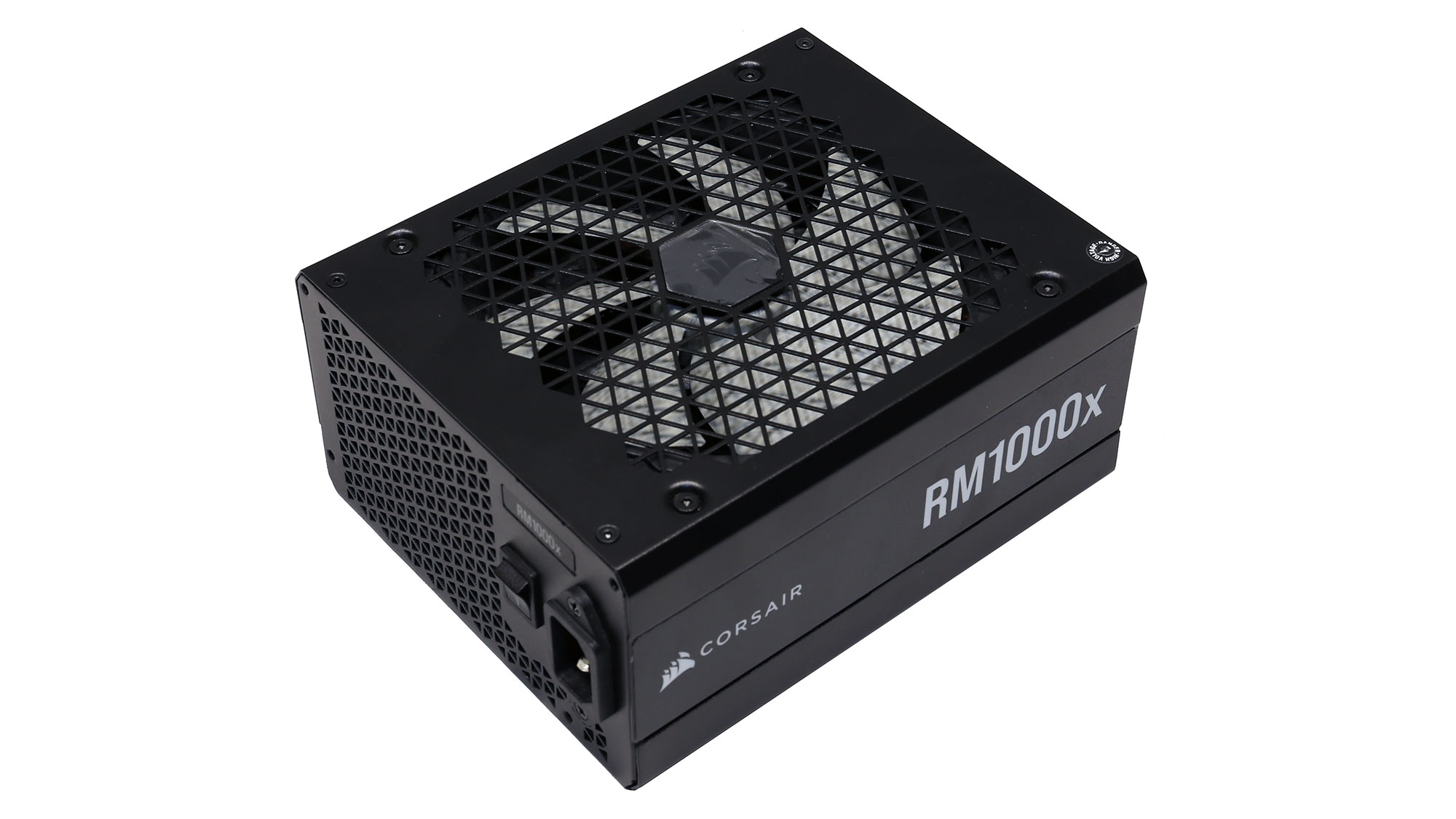
Product Photos
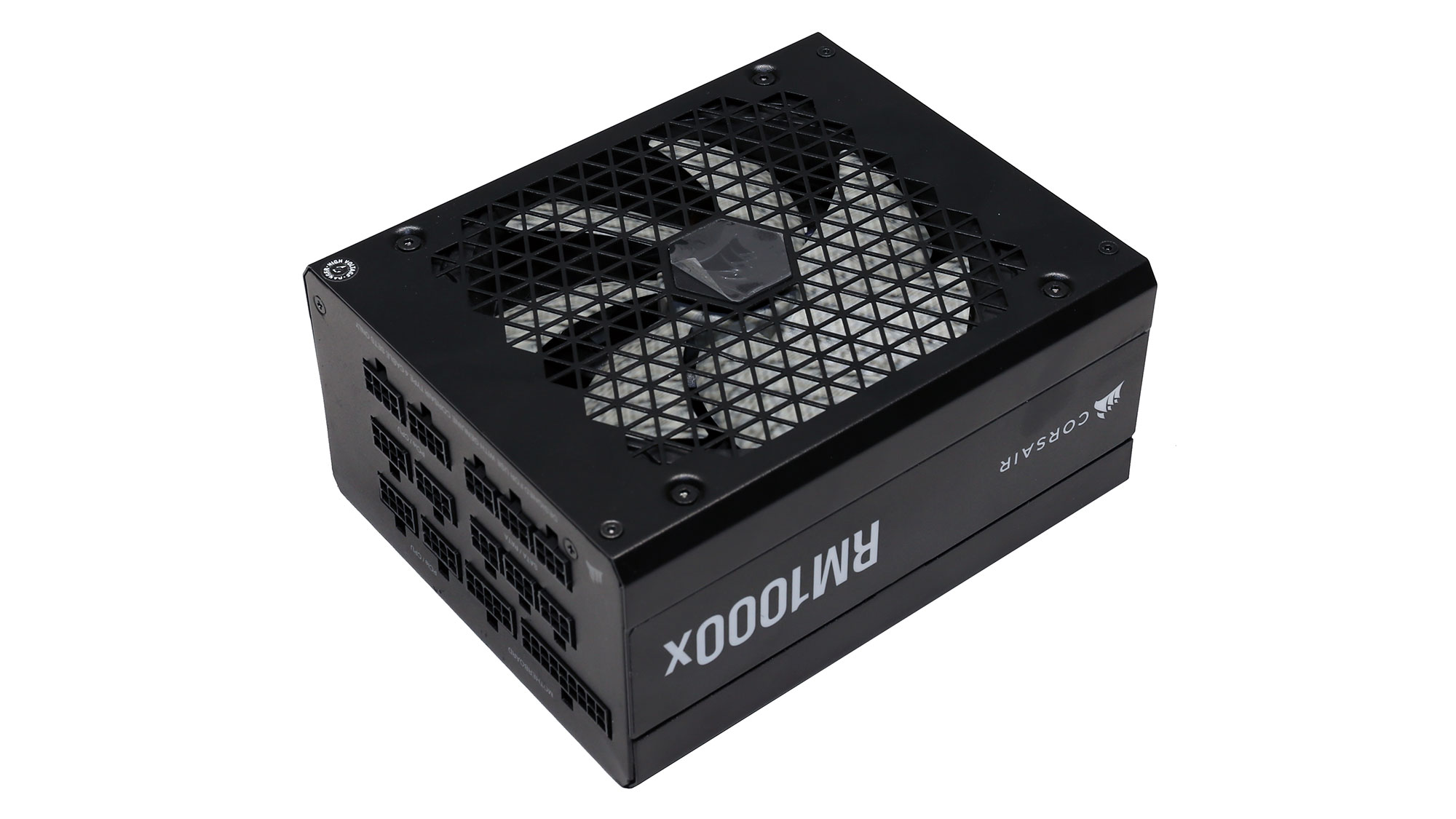

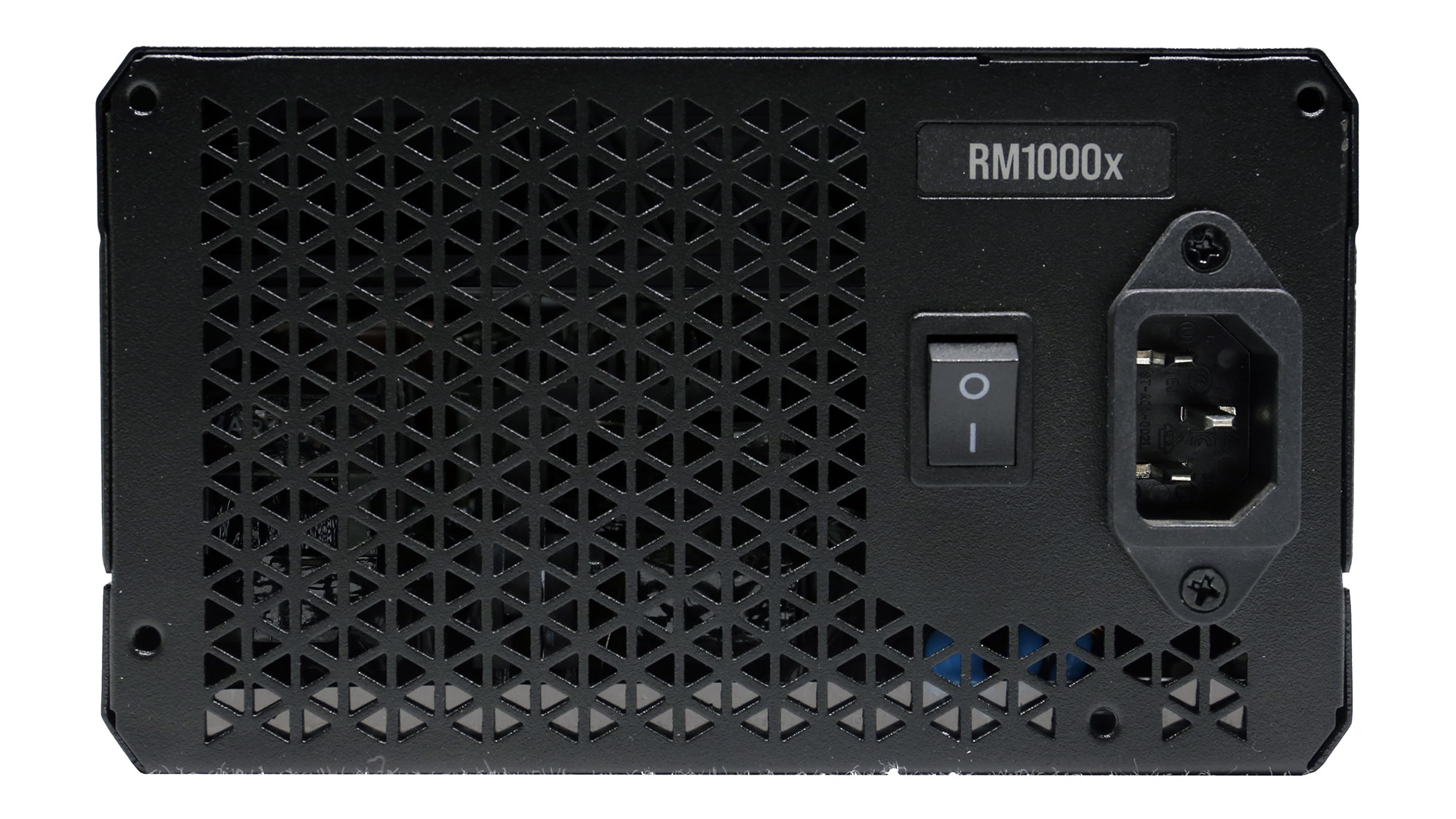


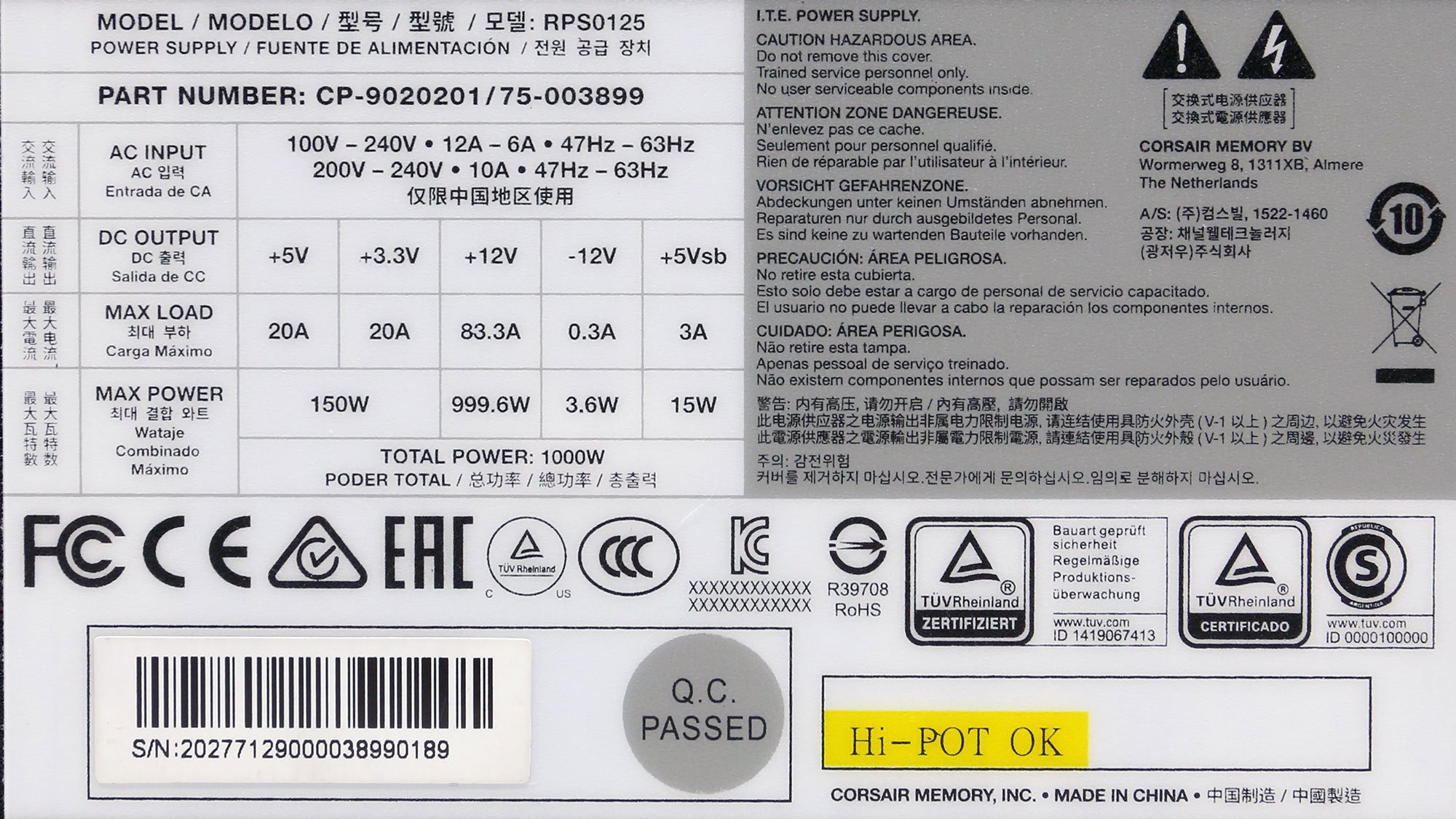
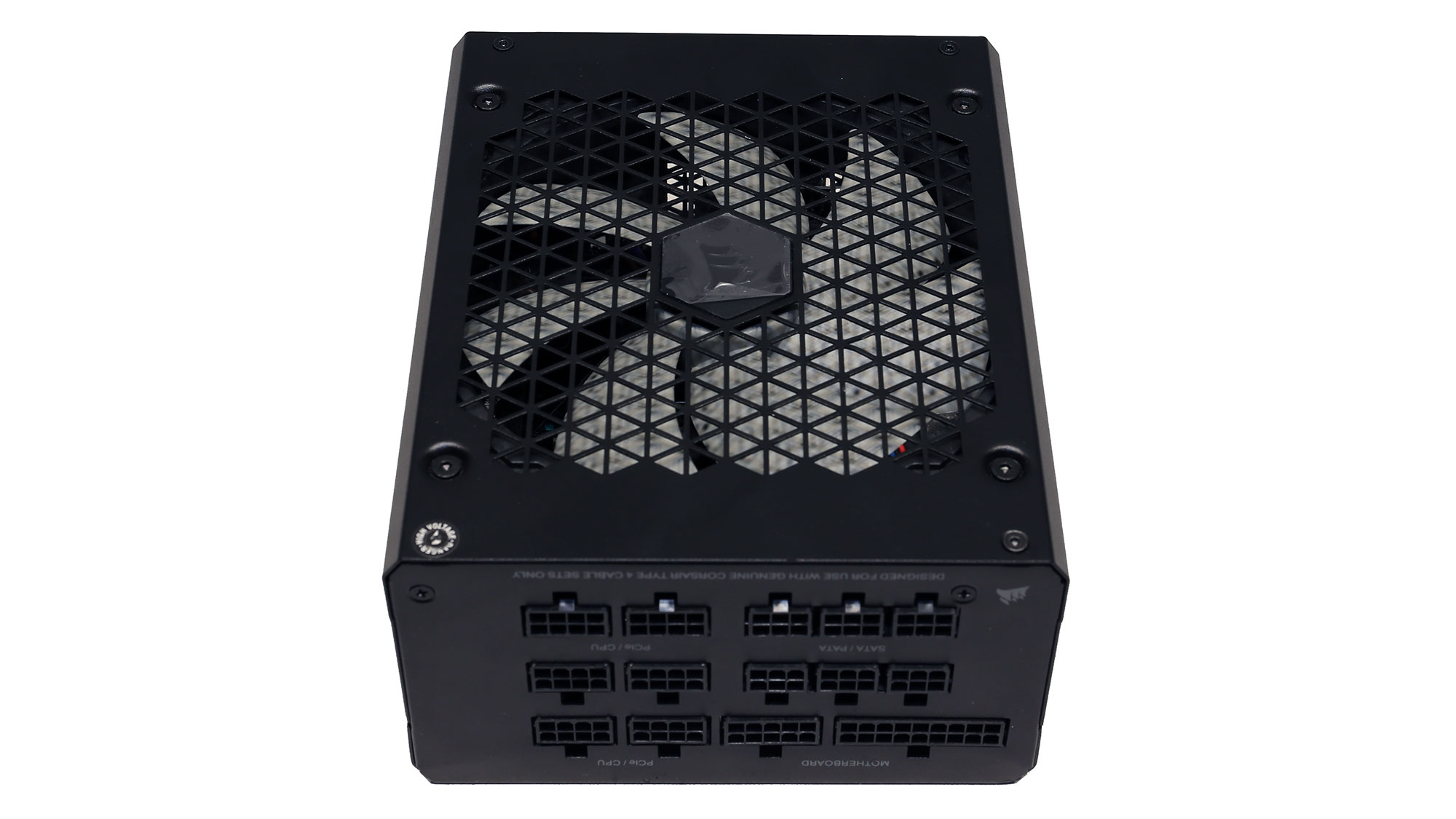
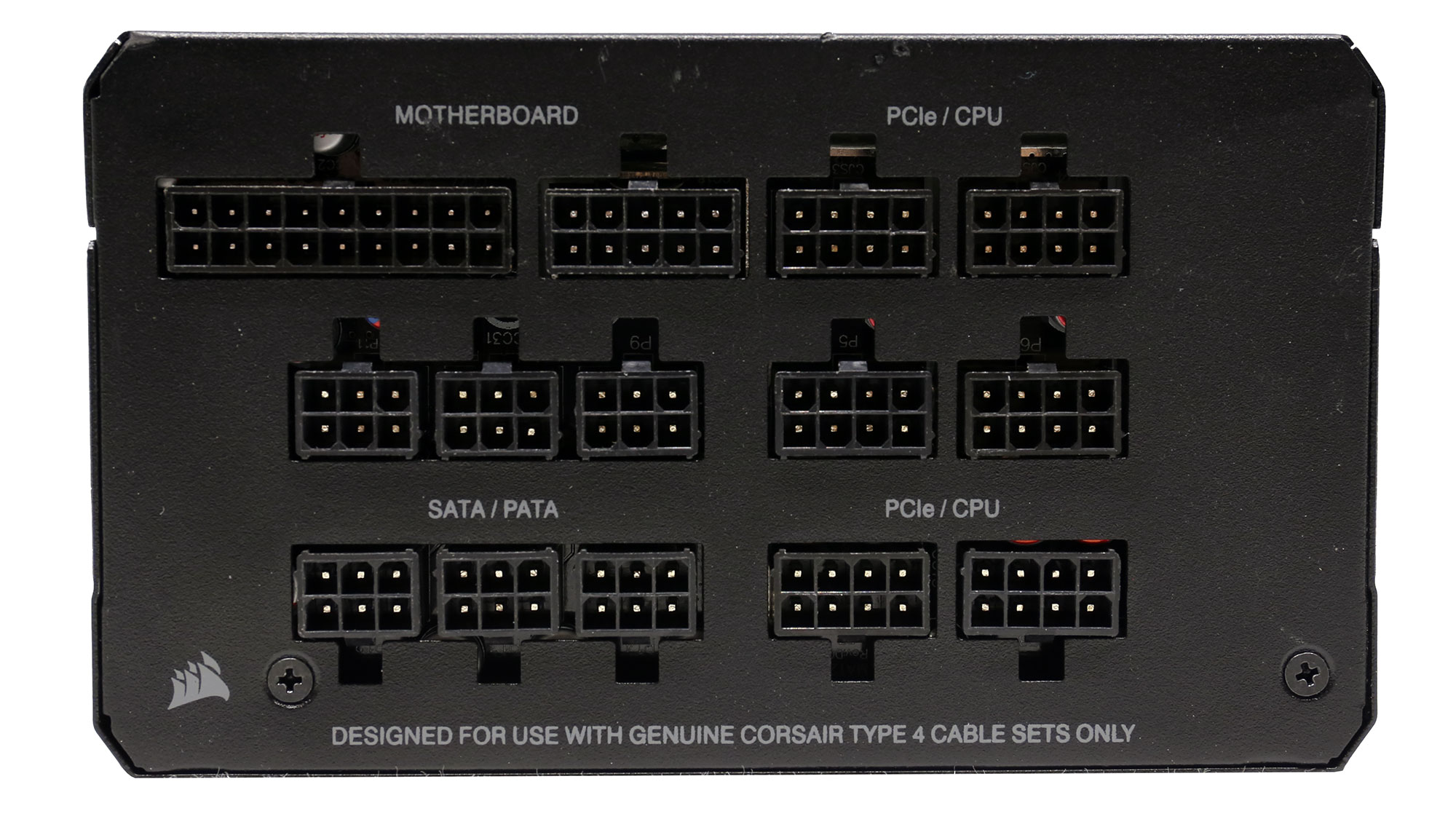

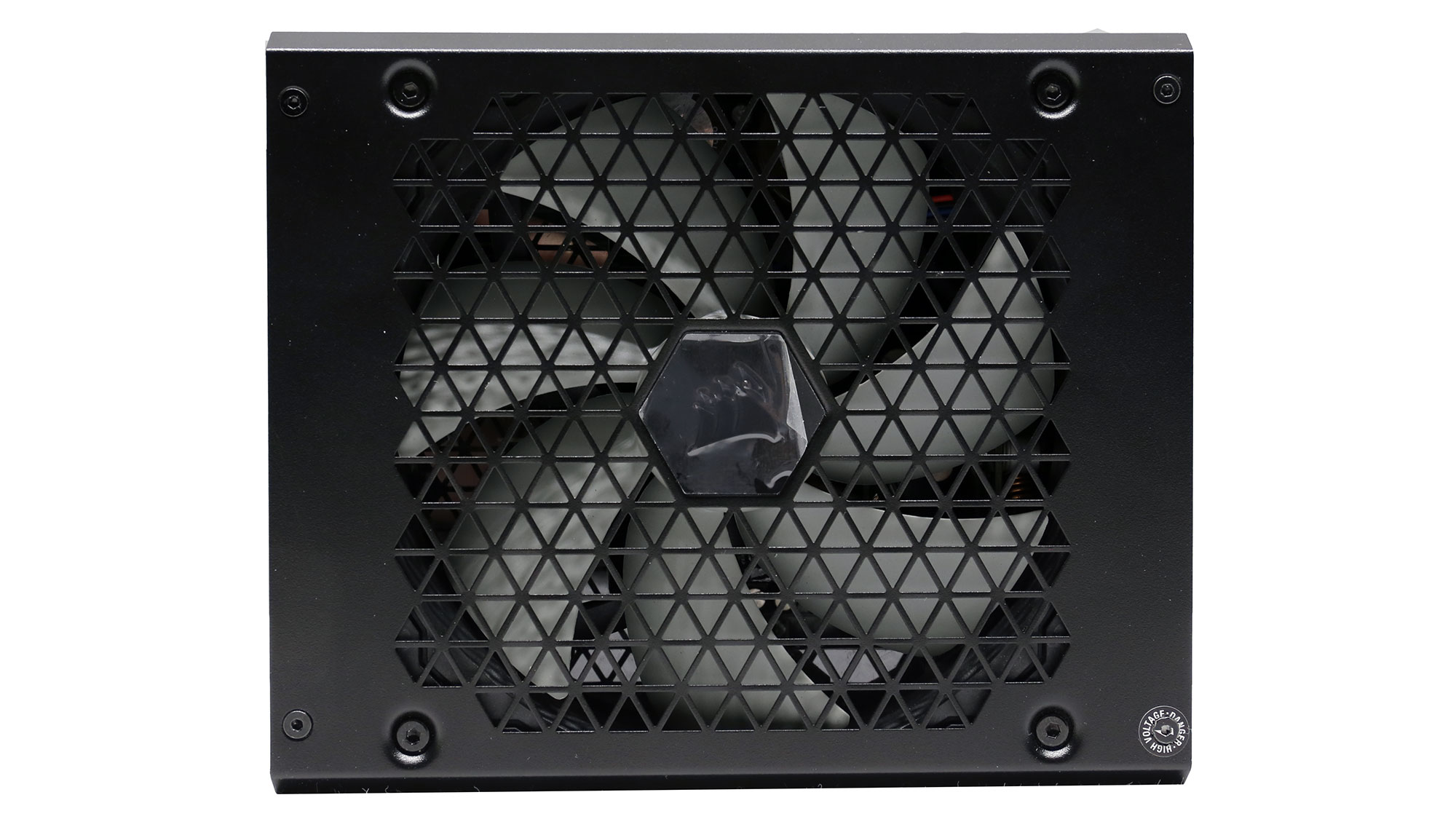
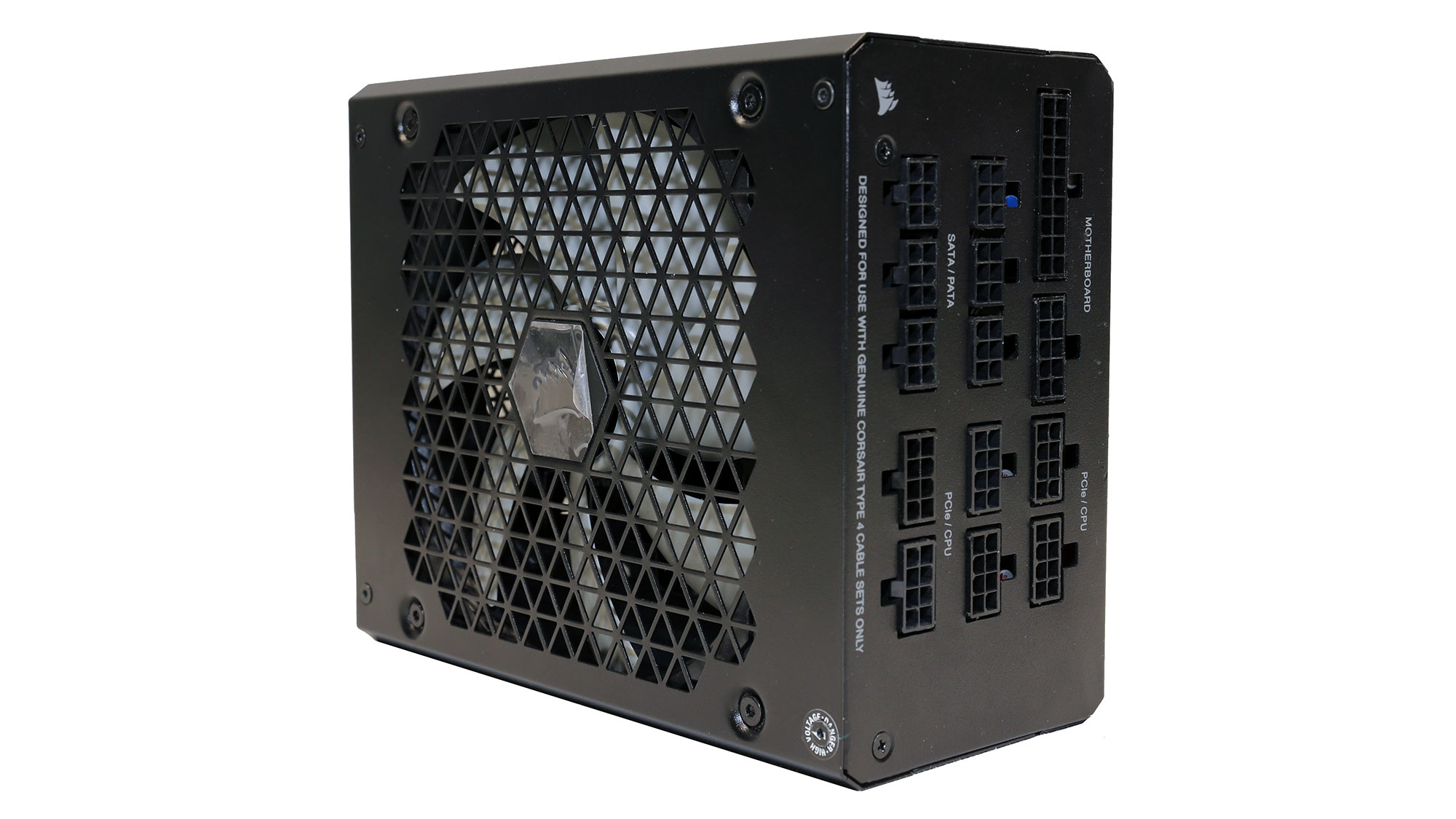
The strongest member of the RMx line has 1000W max power so that it can be the heart of a demanding system, equipped with a potent CPU and a pair of graphics cards (not a pair Nvidia RTX 3080/90 or a pair of AMD RX 6800/6900 XT VGAs, though). For gaming purposes, using two graphics cards is next to useless. However, in some applications, still, multiple GPUs bring huge performance gains (e.g., rendering applications like the OctaneRender, VRAY GPU, and Redshift).
Externally the differences between the old and new RMx units are notable. The fan grille is different, and the same goes for the front exhaust. Both use triangular perforations, which look nice.

Product Photos


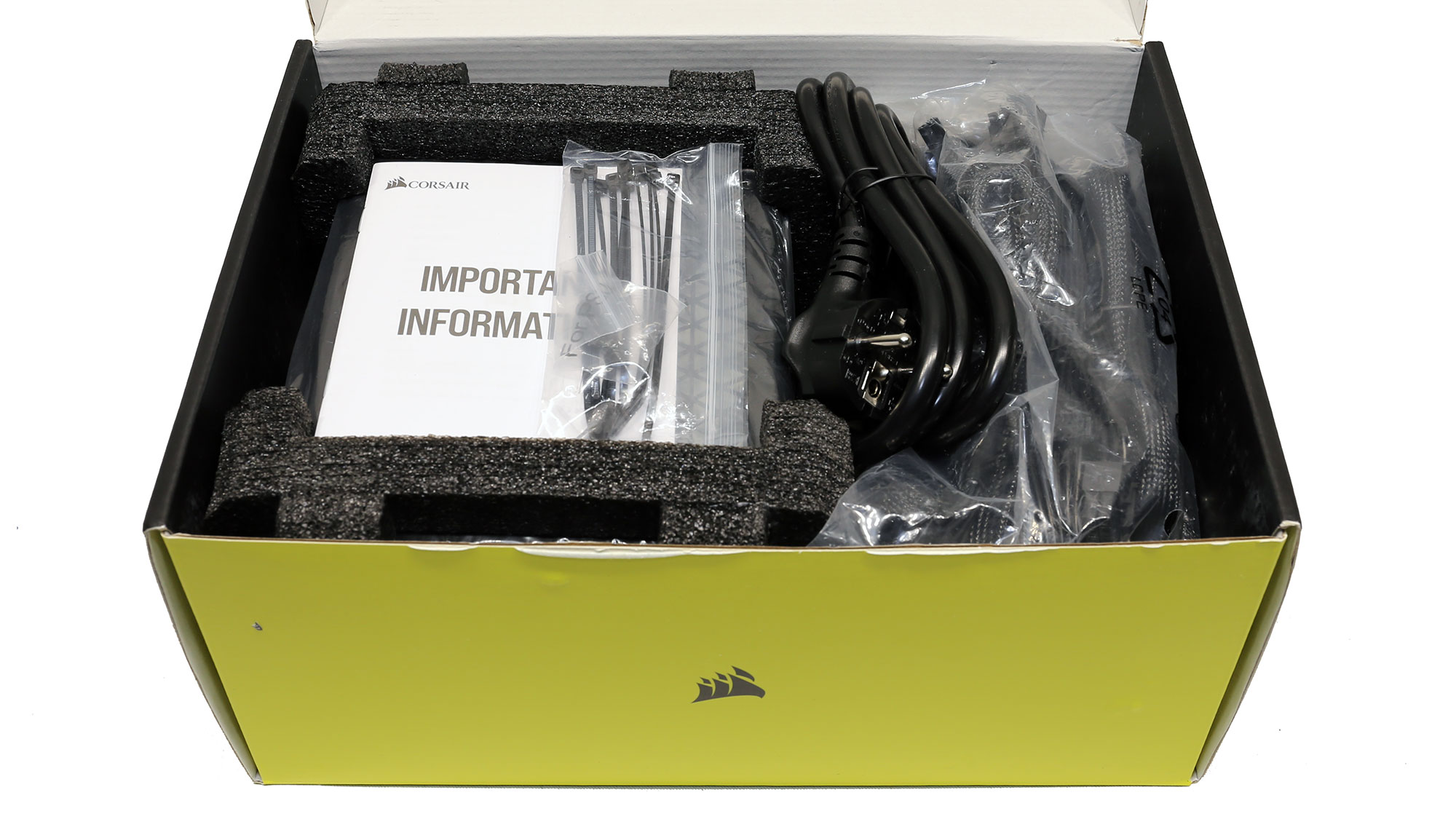
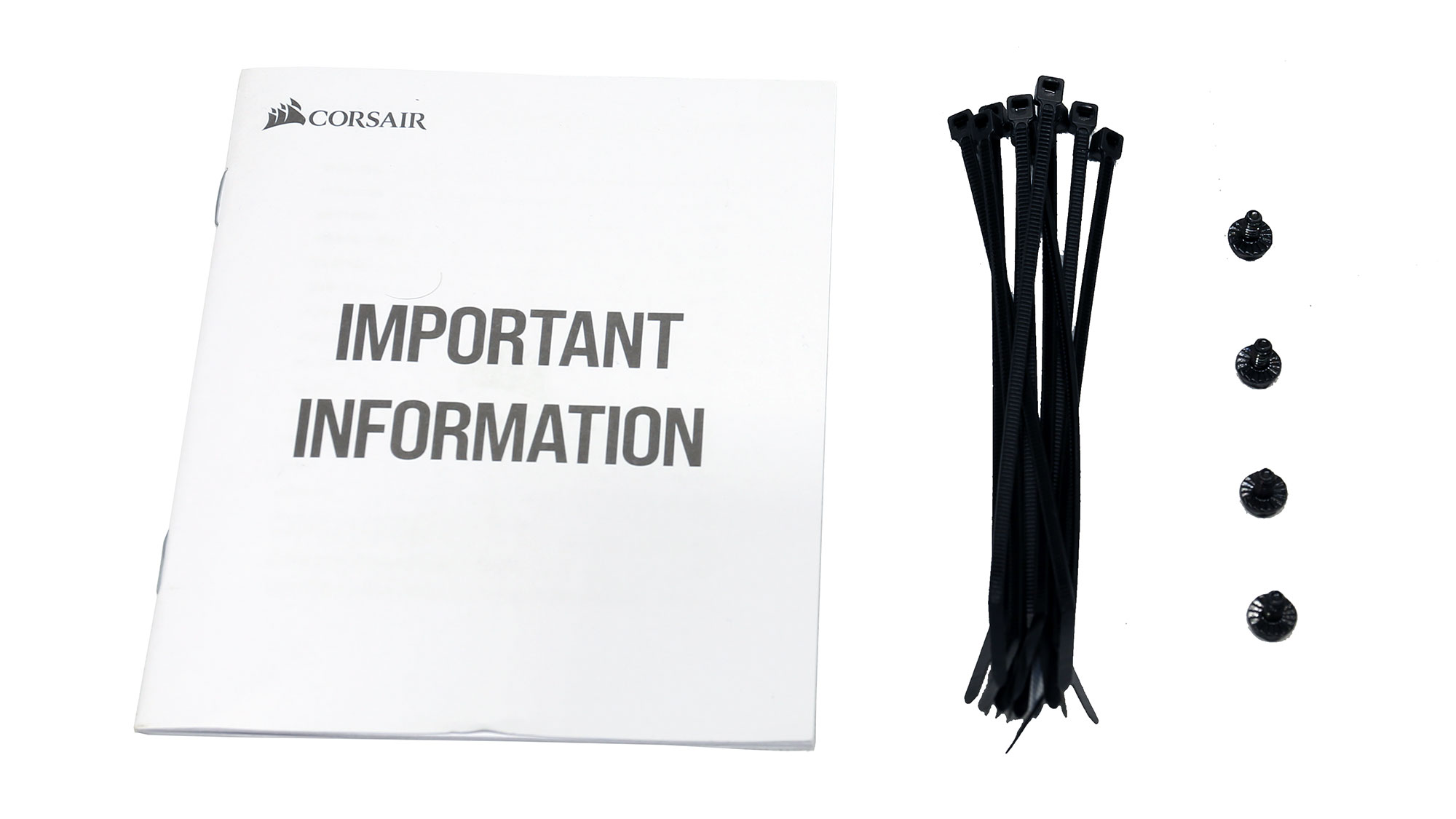
Specifications
|
Manufacturer (OEM) |
CWT |
|
Max. DC Output |
1000W |
|
Efficiency | 80 PLUS Gold, Cybenetics Gold (87-89%) |
|
Noise | Cybenetics A- (25-30 dB[A]) |
|
Modular |
✓ (fully) |
|
Intel C6/C7 Power State Support |
✓ |
|
Operating Temperature (Continuous Full Load) | 0 - 50°C |
|
Over Voltage Protection |
✓ |
|
Under Voltage Protection |
✓ |
|
Over Power Protection |
✓ |
|
Over Current (+12V) Protection |
✓ |
|
Over Temperature Protection |
✓ |
|
Short Circuit Protection |
✓ |
|
Surge Protection |
✓ |
|
Inrush Current Protection |
✓ |
|
Fan Failure Protection |
✗ |
|
No Load Operation |
✓ |
|
Cooling |
140mm Magnetic Levitation Fan (NR140ML) |
|
Semi-Passive Operation |
✓ |
|
Dimensions (W x H x D) |
150 x 85 x 180mm |
|
Weight |
1.99 kg (4.39 lb) |
|
Form Factor |
ATX12V v2.52, EPS 2.92 |
|
Warranty |
10 Years |
Power Specifications
| Rail | 3.3V | 5V | 12V | 5VSB | -12V | |
|---|---|---|---|---|---|---|
| Max. Power | Amps | 20 | 20 | 83.3 | 3 | 0.3 |
| Watts | 150 | 999.6 | 15 | 3.6 | ||
| Total Max. Power (W) | 1000 |
Cables & Connectors
| Modular Cables | Row 0 - Cell 1 | Row 0 - Cell 2 | Row 0 - Cell 3 | Row 0 - Cell 4 |
| Description | Cable Count | Connector Count (Total) | Gauge | In Cable Capacitors |
| ATX connector 20+4 pin (610mm) | 1 | 1 | 16-20AWG | Yes |
| 4+4 pin EPS12V (650mm) | 3 | 3 | 18AWG | Yes |
| 6+2 pin PCIe (600mm+150mm) | 3 | 6 | 16-18AWG | Yes |
| SATA (500mm+110mm+110mm+110mm) | 2 | 8 | 18AWG | No |
| SATA (520mm+110mm+110mm) | 2 | 6 | 18AWG | No |
| 4-pin Molex (450mm+100mm+100mm+100mm) | 2 | 8 | 18AWG | No |
| AC Power Cord (1400mm) - C13 coupler | 1 | 1 | 16AWG | - |
This is the first power supply that we evaluate, with three EPS connectors. As it seems Corsair knows something that we don't or else there wouldn't be so many of these connectors. There are also three cables with six PCIe in total. The RM1000x can have three EPS and six PCIe connectors available at the same time! This can be too much, even for a 1000W PSU.
The number of peripheral connectors is sky-high, but the distance between the peripheral connectors is too short at 100mm. Ideally, these connectors should be 150mm away from each other.
Get Tom's Hardware's best news and in-depth reviews, straight to your inbox.
It wasn't easy to connect the main ATX cable on our sample because the connectors' pair on this cable is not aligned with the PSU's corresponding modular sockets. We had to twist the cable a bit until the connectors aligned. We contacted Corsair about this, and they informed us that this issue was only with our 1000W review samples, where we got the wrong ATX cable. Please note that the RM1000x uses a different ATX cable from the RM850x and RM750x.
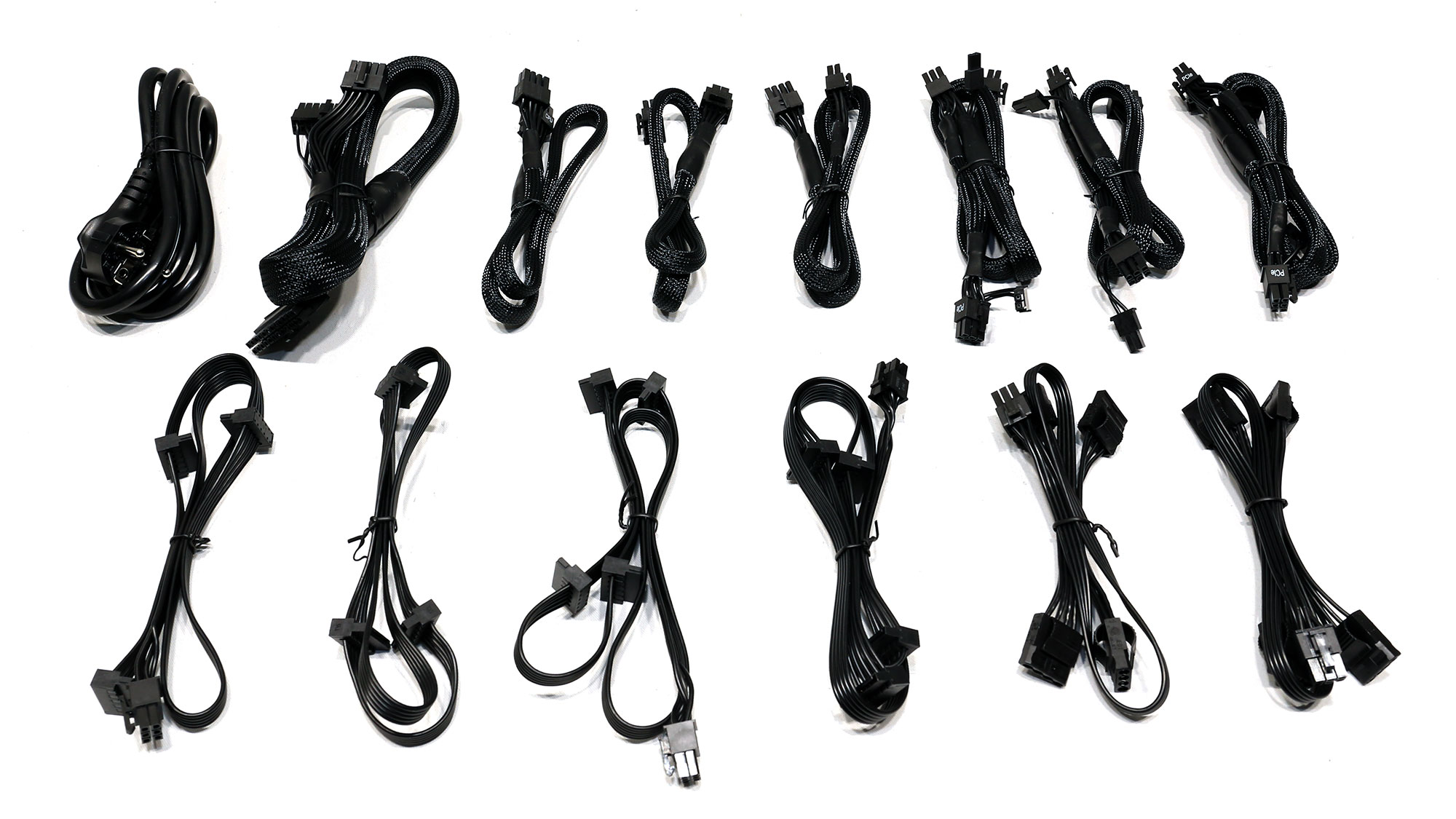
Cable Photos
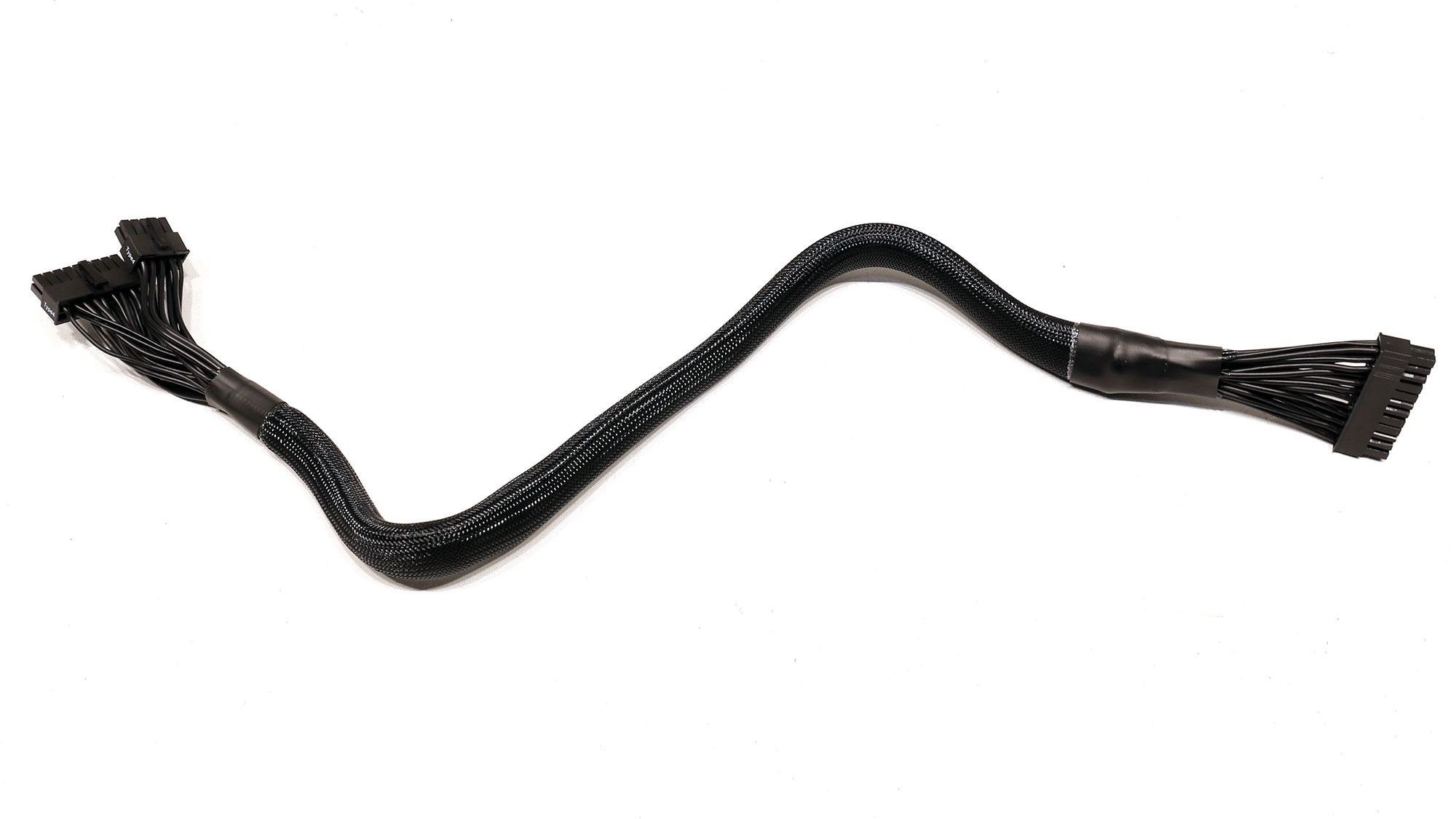
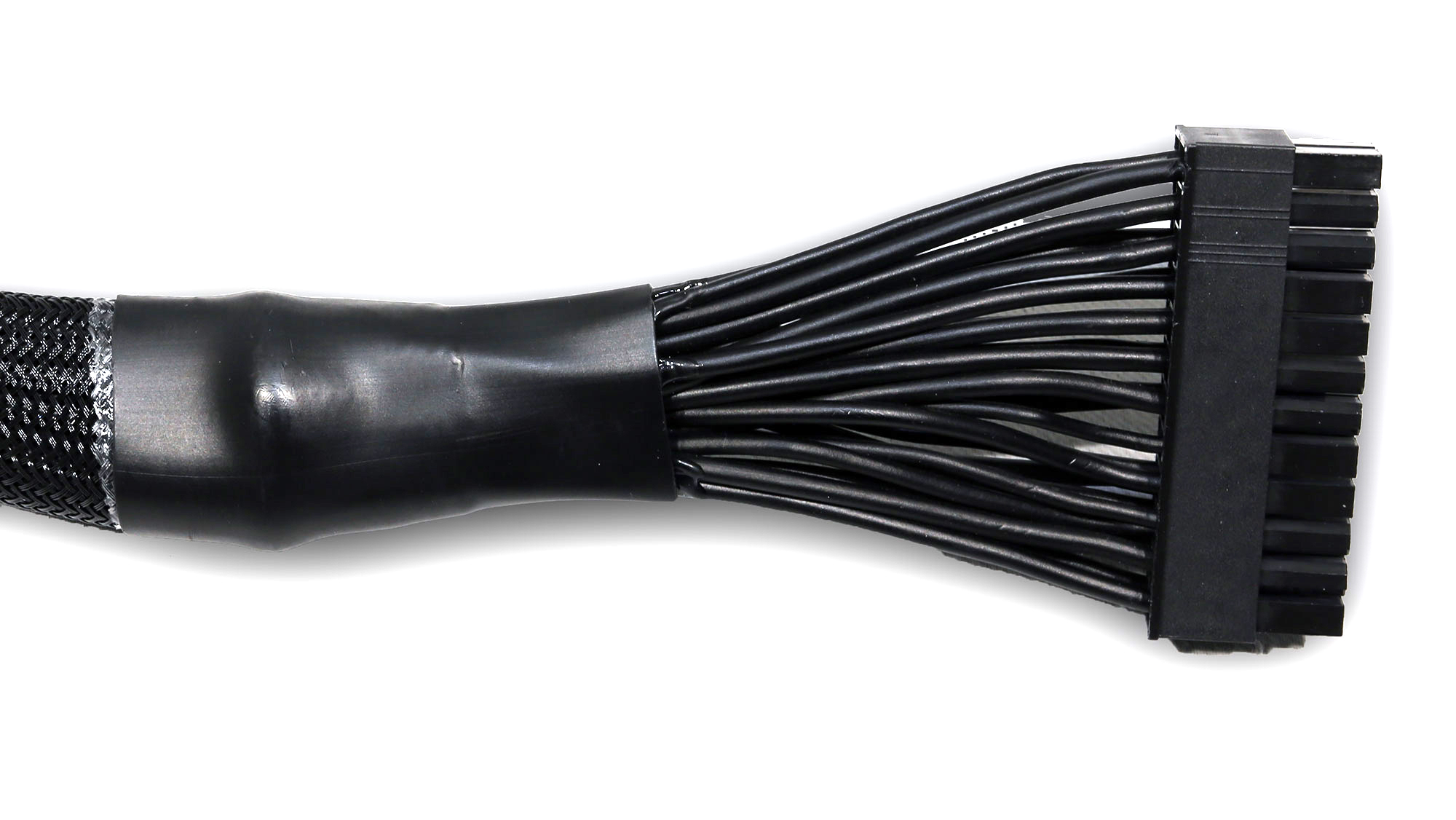

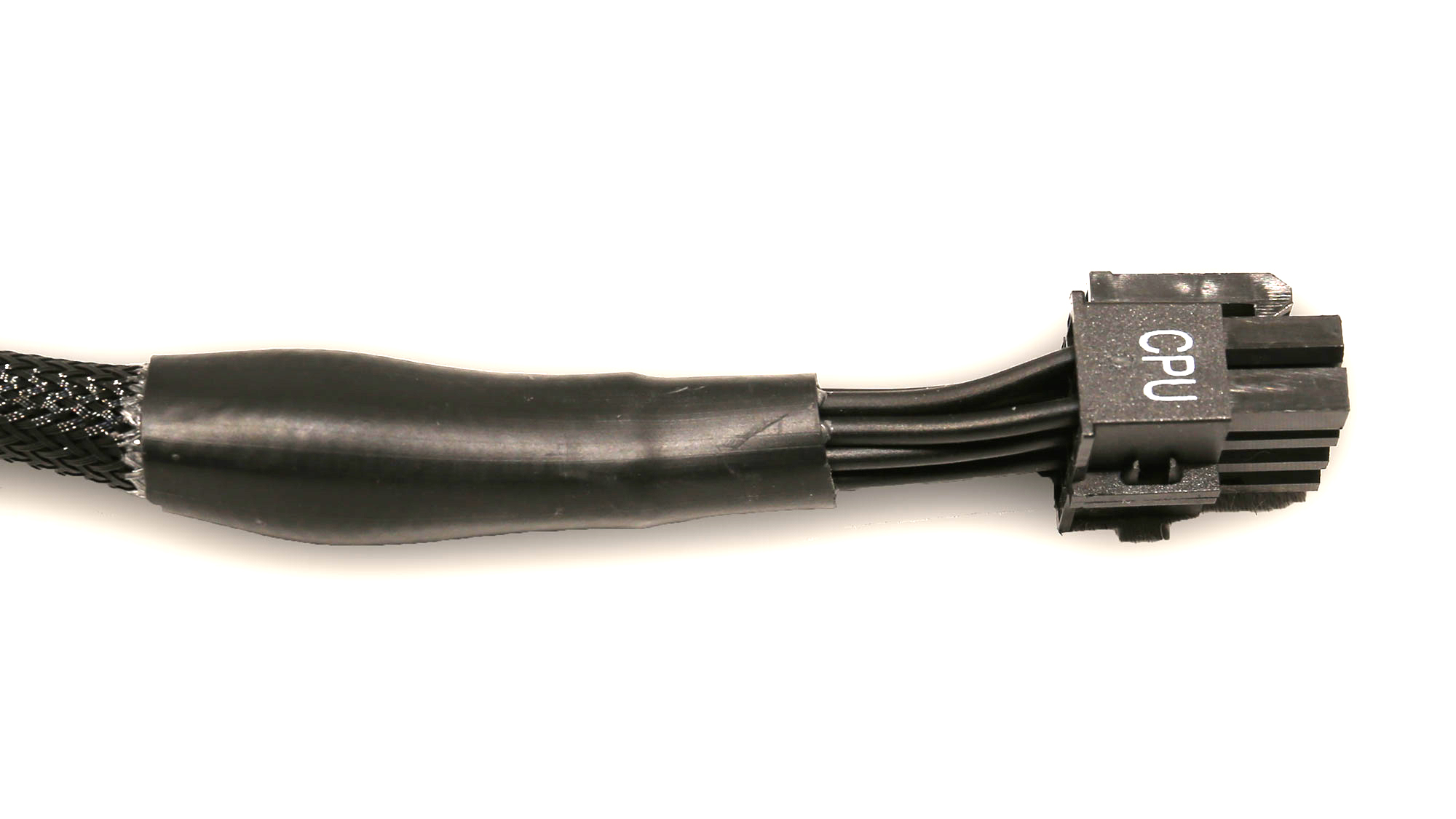
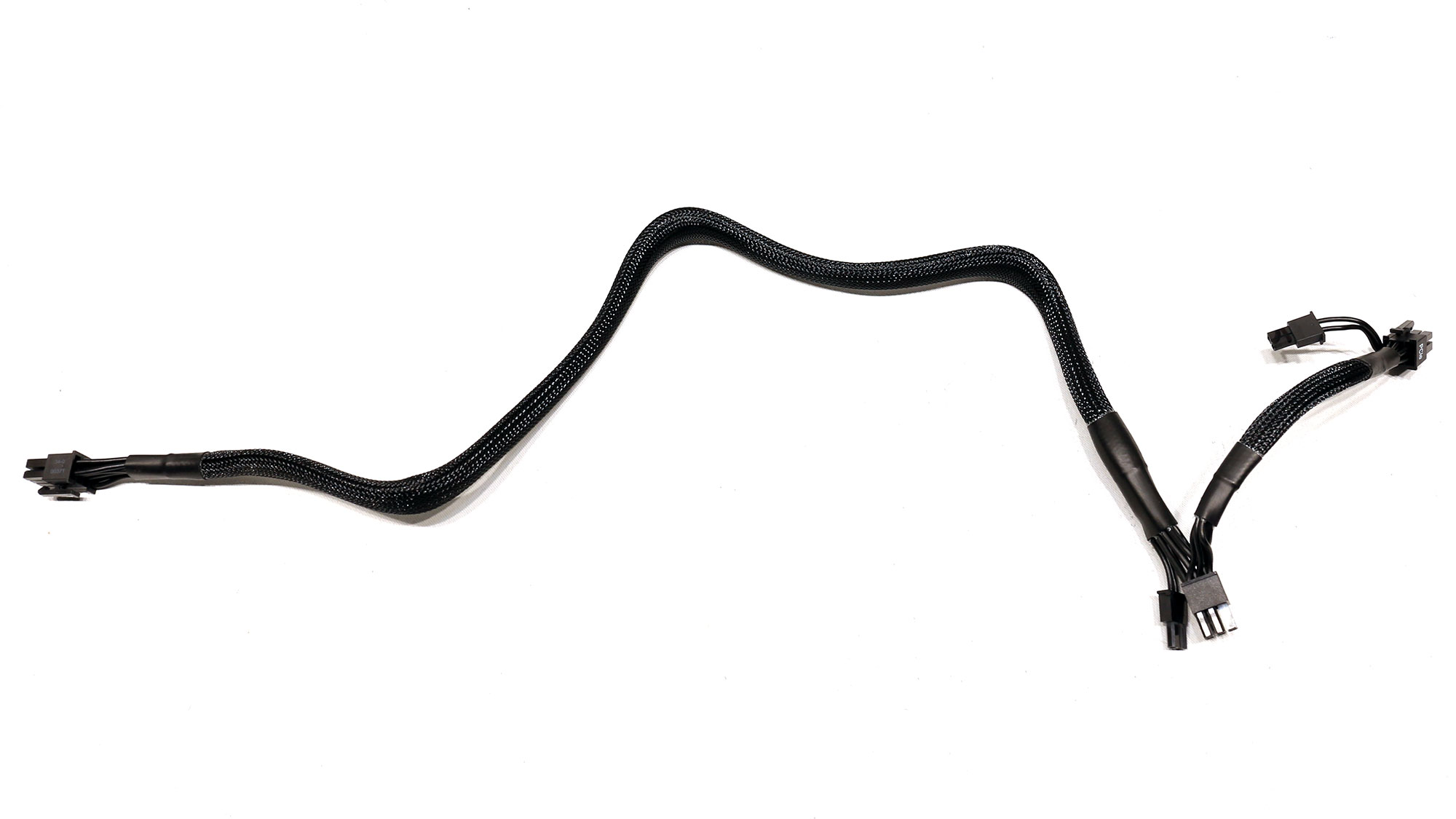
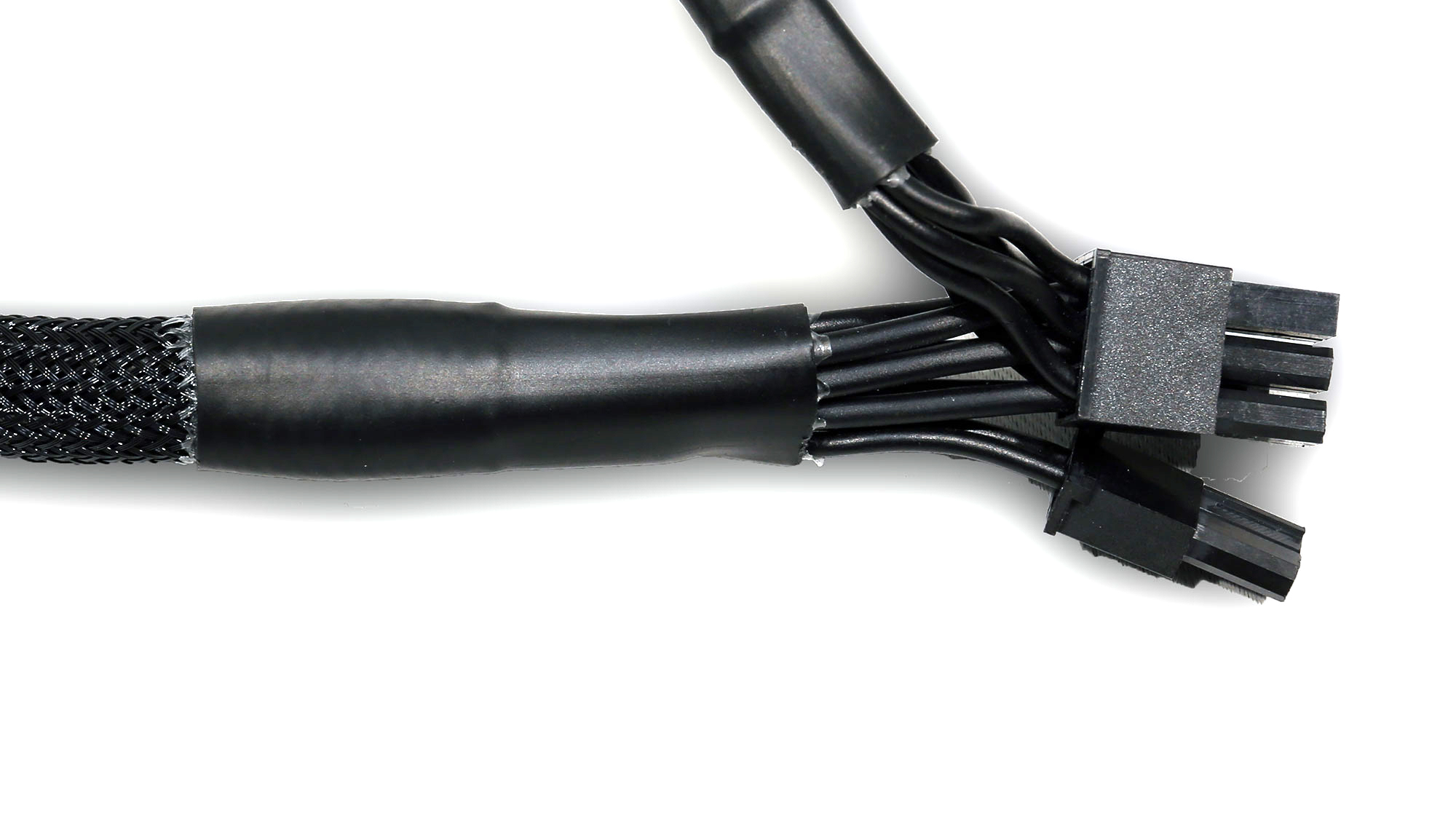
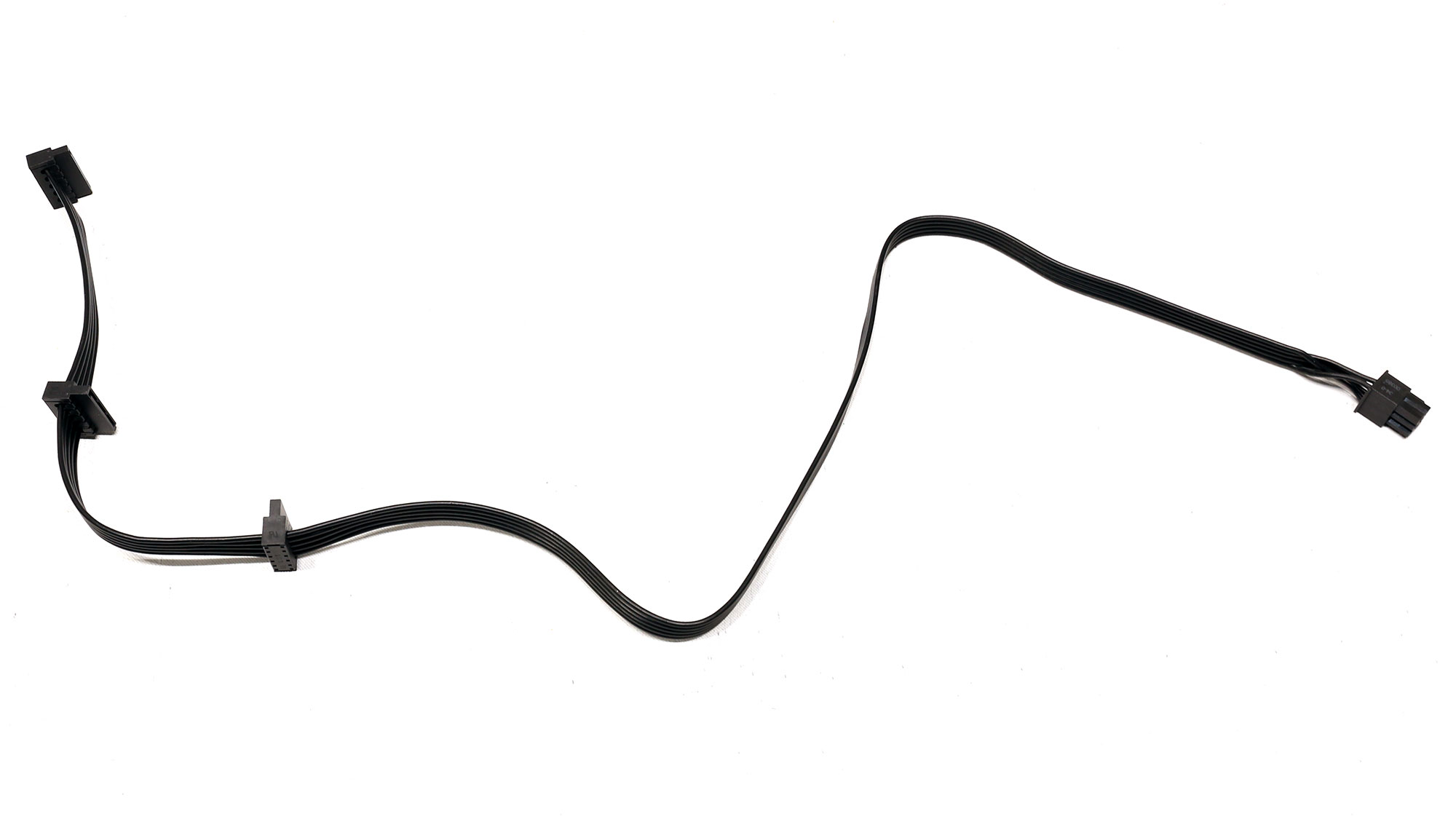
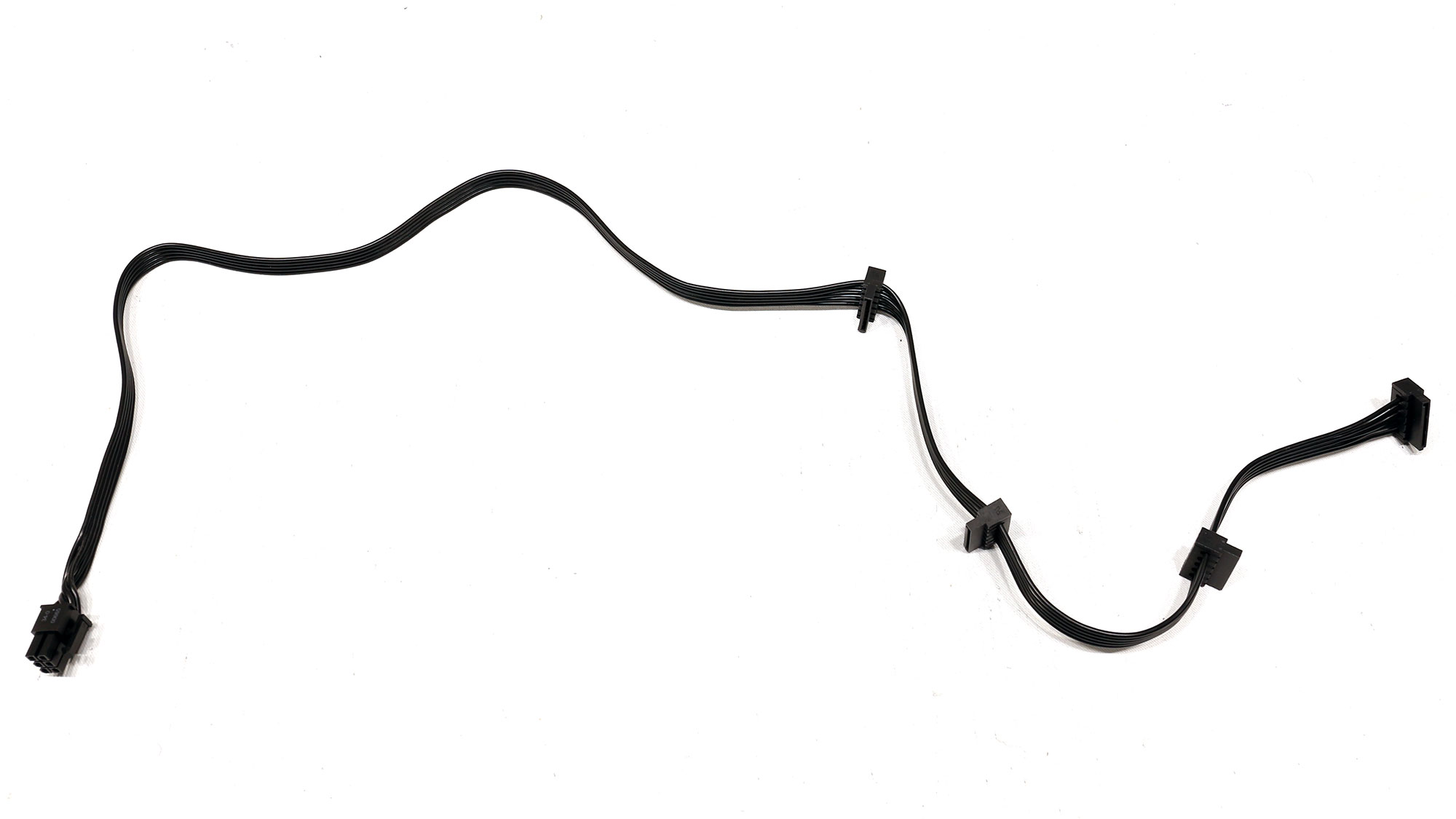
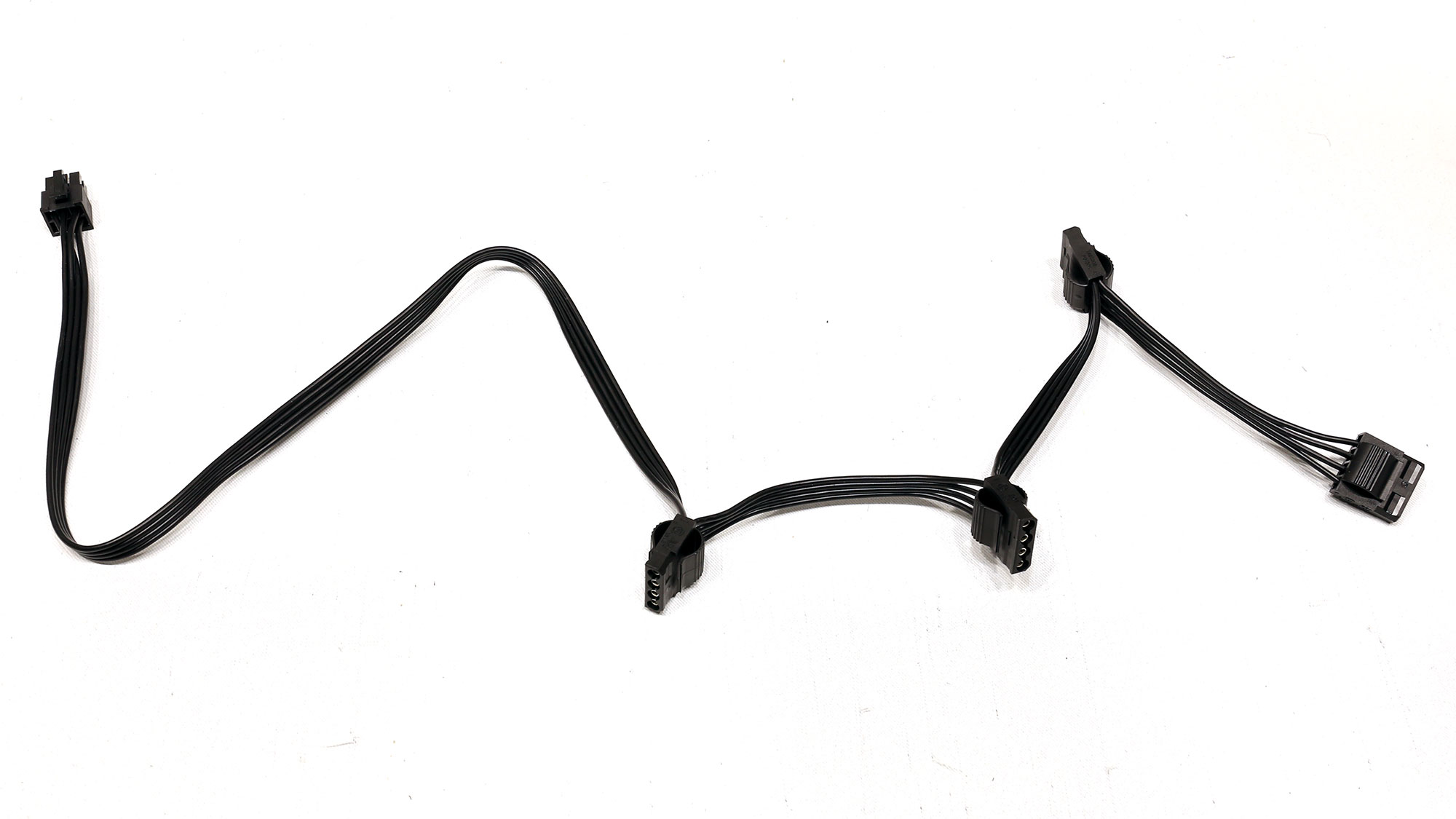
Component Analysis
We strongly encourage you to have a look at our PSUs 101 article, which provides valuable information about PSUs and their operation, allowing you to better understand the components we're about to discuss.
| General Data | - |
| Manufacturer (OEM) | CWT |
| PCB Type | Double Sided |
| Primary Side | - |
| Transient Filter | 6x Y caps, 2x X caps, 2x CM chokes, 1x MOV |
| Inrush Protection | NTC Thermistor SCK203R0 (3 Ohm) & Relay |
| Bridge Rectifier(s) | 2x GBJ2006 (600V, 20A @ 110°C) |
| APFC MOSFETs | 3x Vishay SiHF30N60E (650V, 18A @ 100°C, Rds(on): 0.125Ohm) |
| APFC Boost Diode | 1x On Semiconductor FFSP1065A (650V, 10A @ 152°C) |
| Bulk Cap(s) | 2x Nippon Chemi-Con (400V, 680uF & 470uF each or 1.150uF combined, 2,000h @ 105°C, KMW) |
| Main Switchers | 2x Infineon IPW60R099C6 (650V, 24A @ 100°C, Rds(on): 0.099Ohm) |
| APFC Controller | Champion CM6500UNX & Champion CM03X |
| Resonant Controller | Champion CU6901VAC |
| Topology |
Primary side: APFC, Half-Bridge & LLC converter Secondary side: Synchronous Rectification & DC-DC converters |
| Secondary Side | - |
| +12V MOSFETs | 8x Intenational Rectifier IRFH7004PbF (40V, 164A @ 100°C, Rds(on): 1.4mOhm) |
| 5V & 3.3V |
DC-DC Converters: 2x UBIQ QM3054M6 (30V, 61A @ 100°C, Rds(on): 4.8mOhm) & 2x UBIQ QN3107M6N (30V, 70A @ 100°C, Rds(on): 2.6mOhm) |
| Filtering Capacitors |
Electrolytic: 2x Nippon Chemi-Con (105°C, W), 4x Nippon Chemi-Con (1-5,000h @ 105°C, KZE), 9x Nippon Chemi-Con (4-10,000h @ 105°C, KY), 1x Rubycon (4-10,000h @ @ 105°C, YXJ) |
| Change Over Switch | 1x Sync Power SPN3006 MOSFET (30V, 57A @ 100°C, Rds(on): 5.5mOhm) |
| Supervisor IC | Weltrend WT7502R (OVP, UVP, SCP, PG) |
| Fan Controller | Microchip PIC16F1503 |
| Fan Model | Corsair NR140ML (140mm, 12V, 0.27A, Magnetic Levitation Bearing Fan) |
| 5VSB Circuit | - |
| Rectifier | 1x PS1045L SBR (45V, 10A) & IPS ISD04N65A |
| Standby PWM Controller | On-Bright OB5282 |
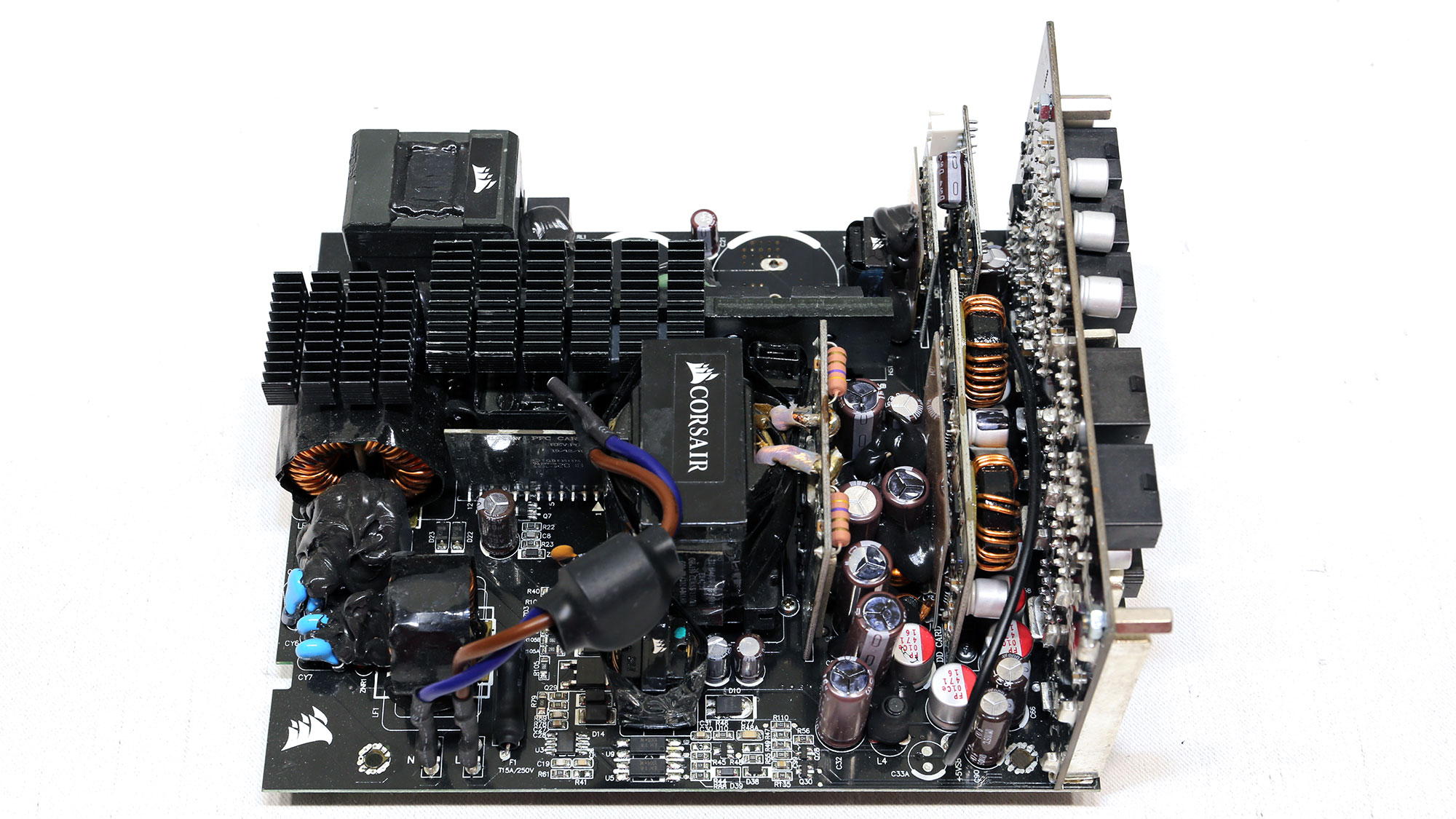
Overall Photos

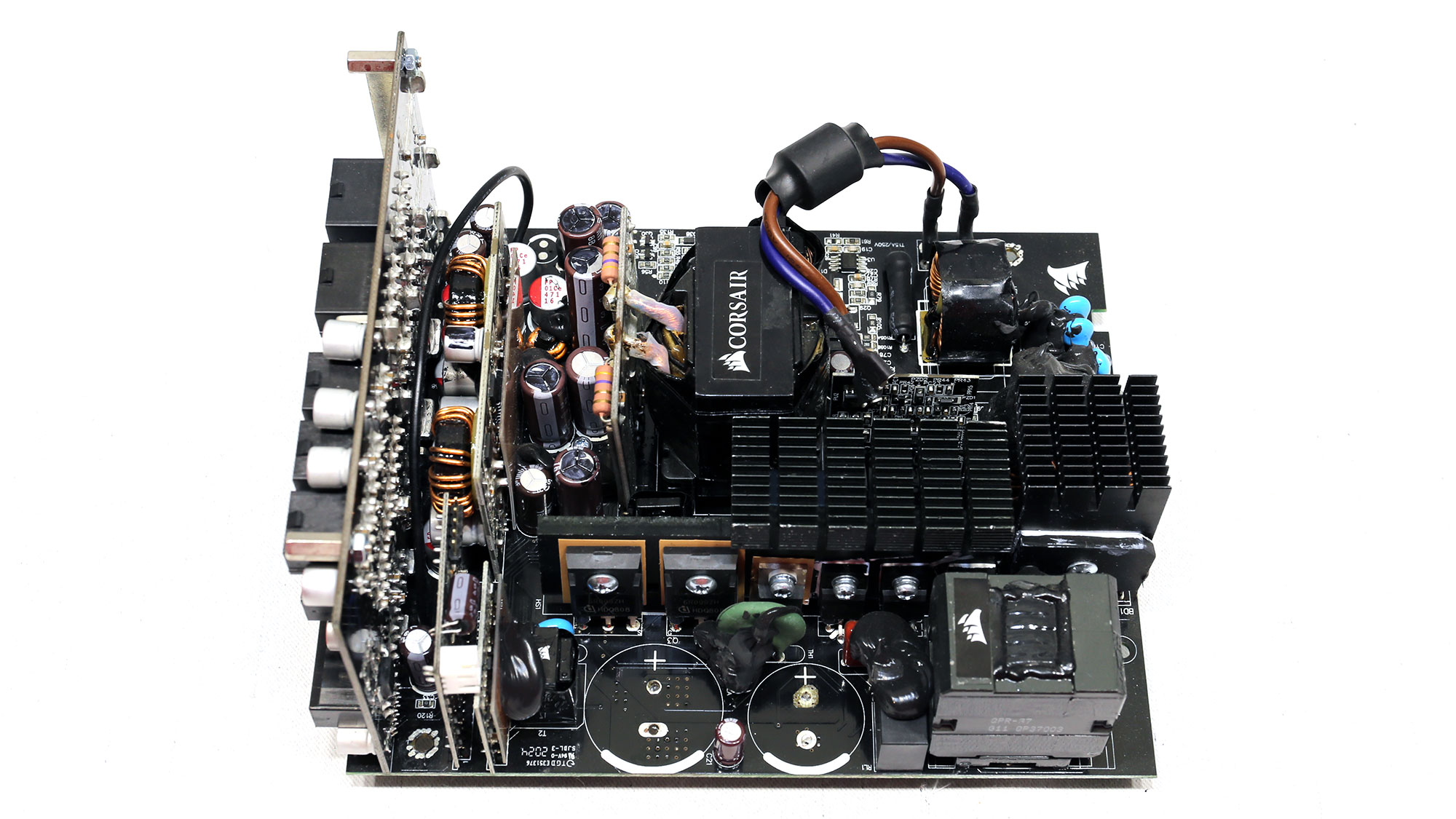

The OEM didn't change, so Channel Well Technology (CWT) makes the new RMx units. The platform has several differences from the previous one to offer improved performance and ATX v2.52 compatibility. The major change is the new fan, while the PCB's dimensions remain the same with the older platform. It is nice to see normal dimensions and not a downsized PCB because, in most cases, smaller dimensions bring increased noise output because there is not enough room between the PSU's components affecting airflow and increasing at the same time, operating temperatures.
Corsair used good capacitors on both primary and secondary sides, and the MOSFETs are of high quality. This is an expensive platform, especially if we take into account the inflated prices in PSU parts.
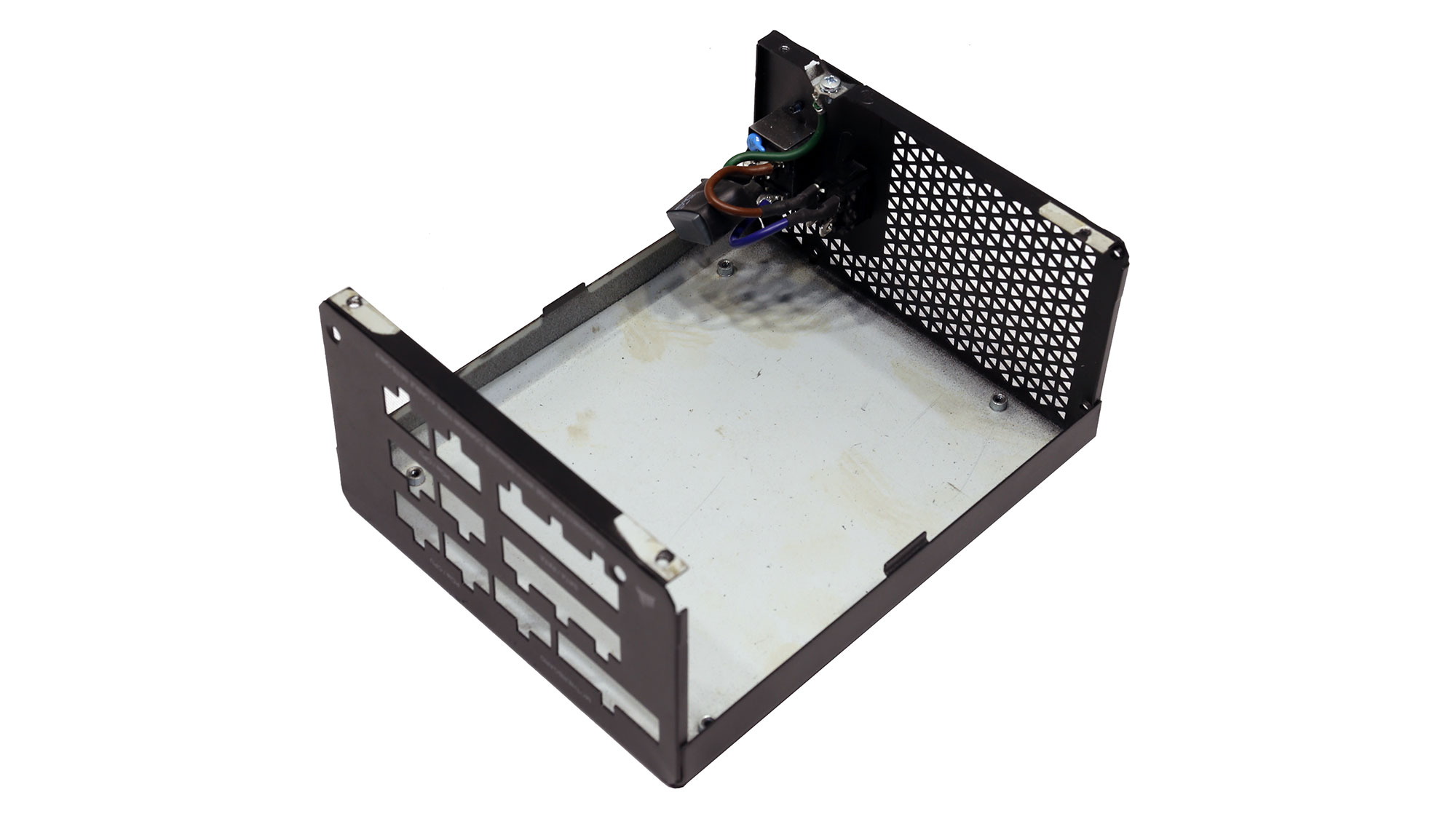
Transient filter
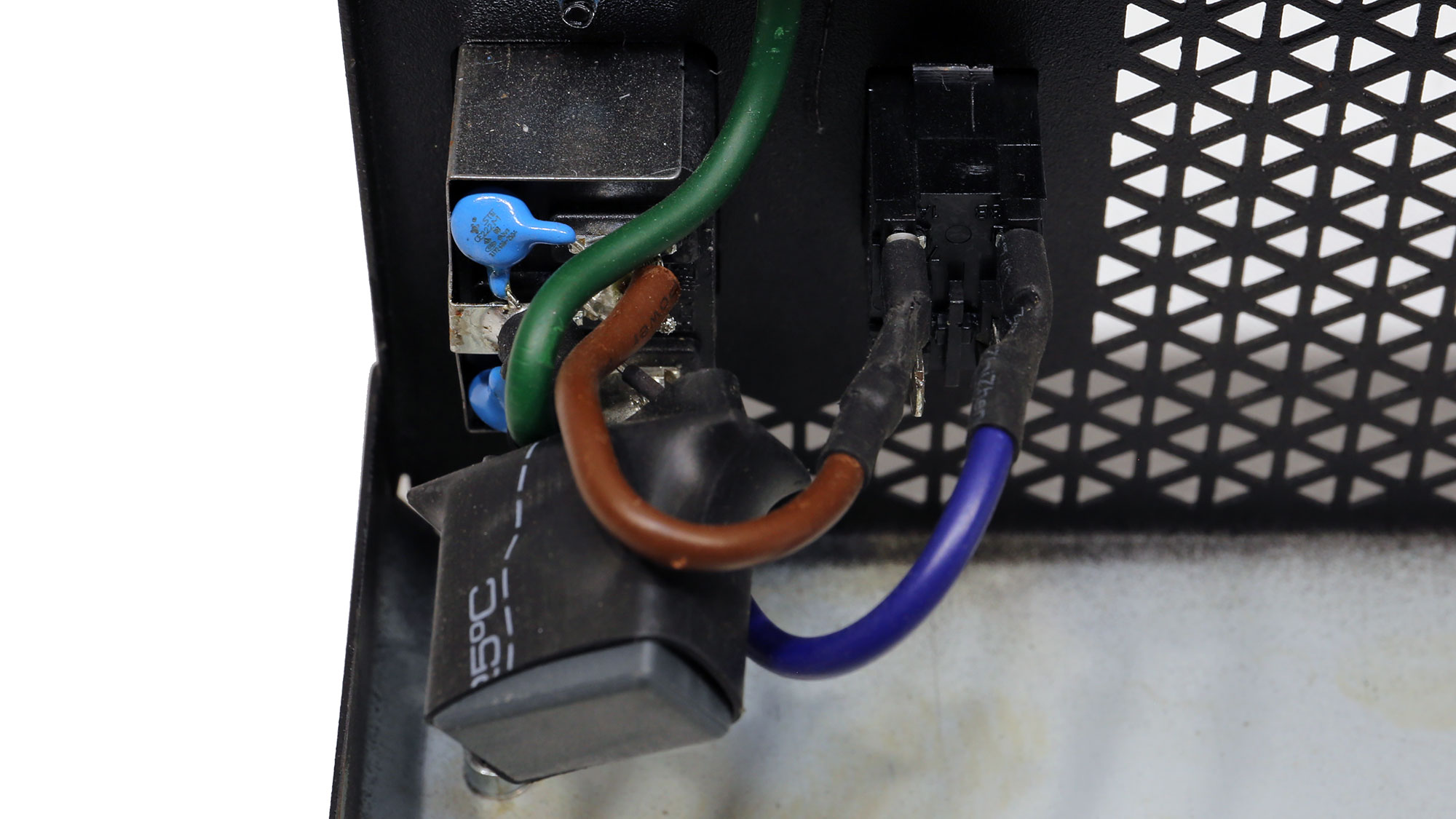
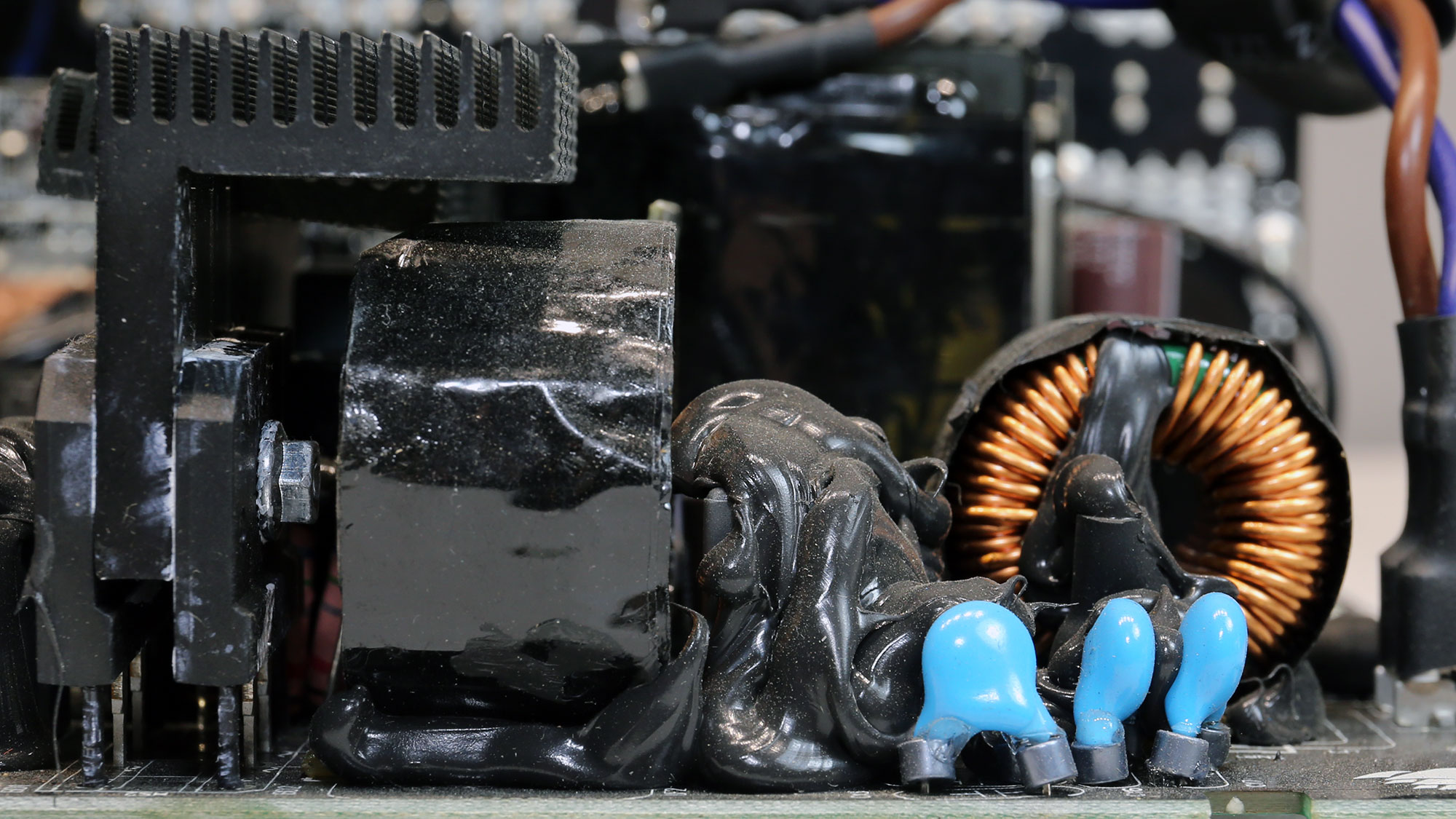
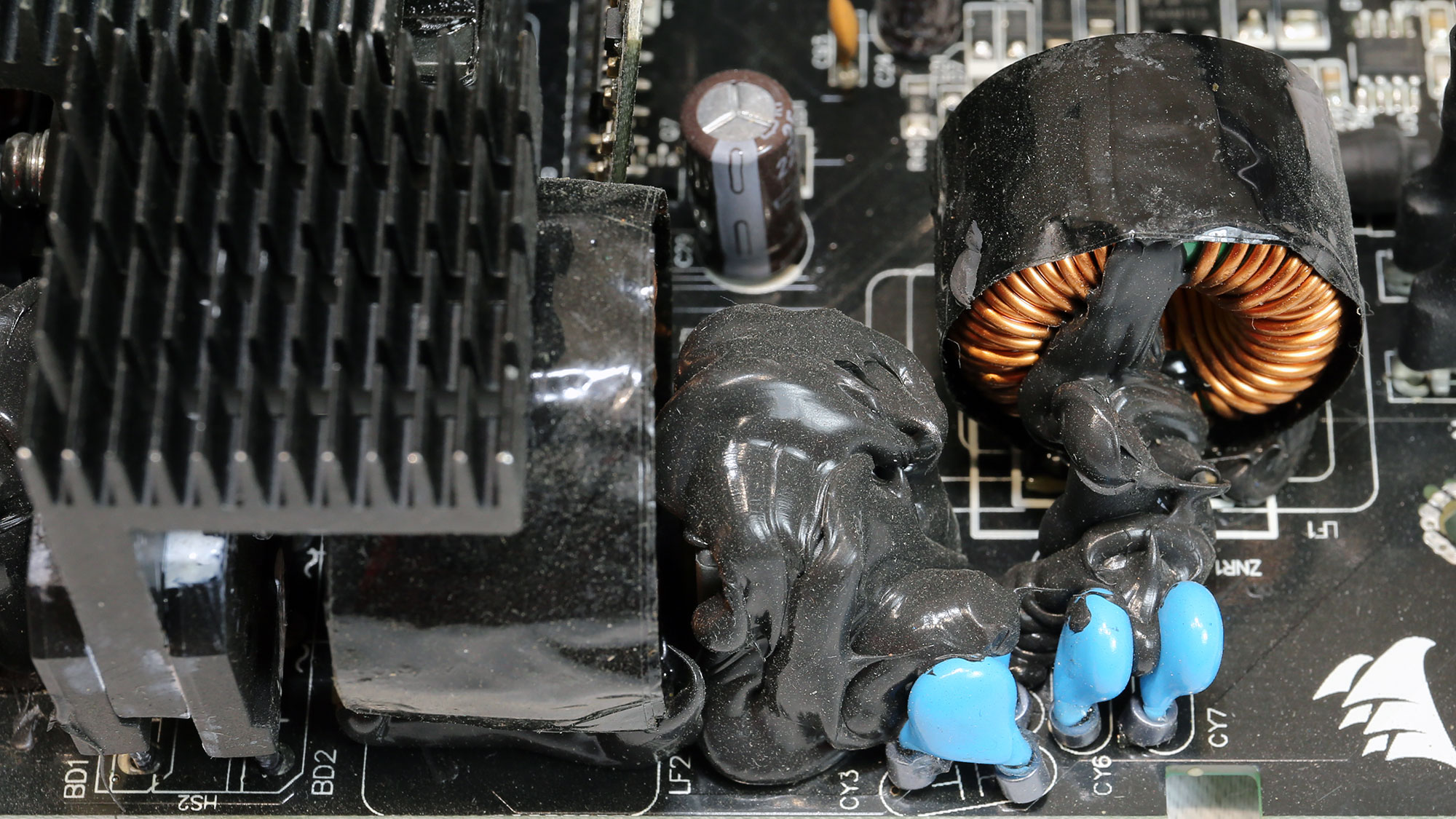

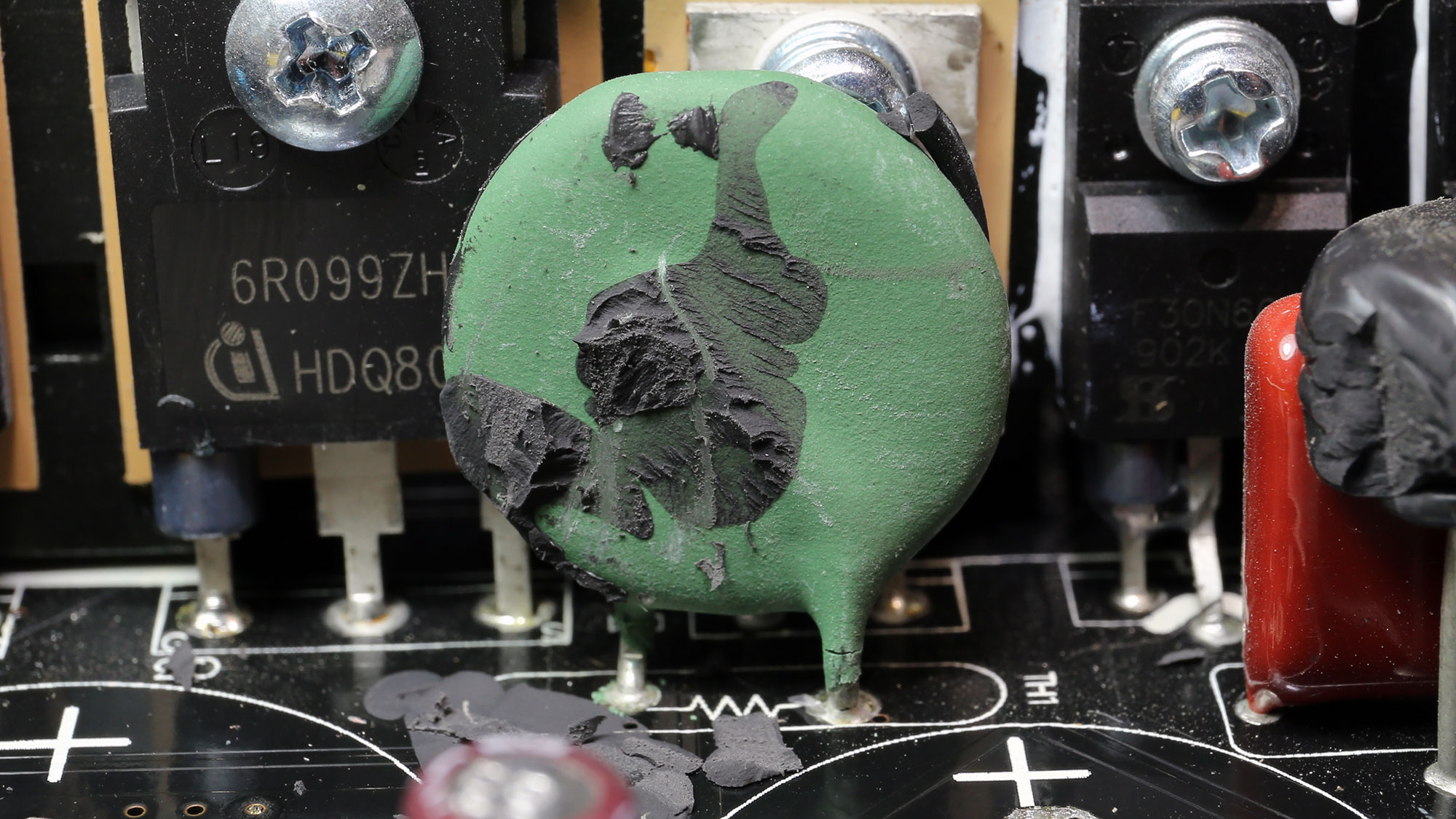
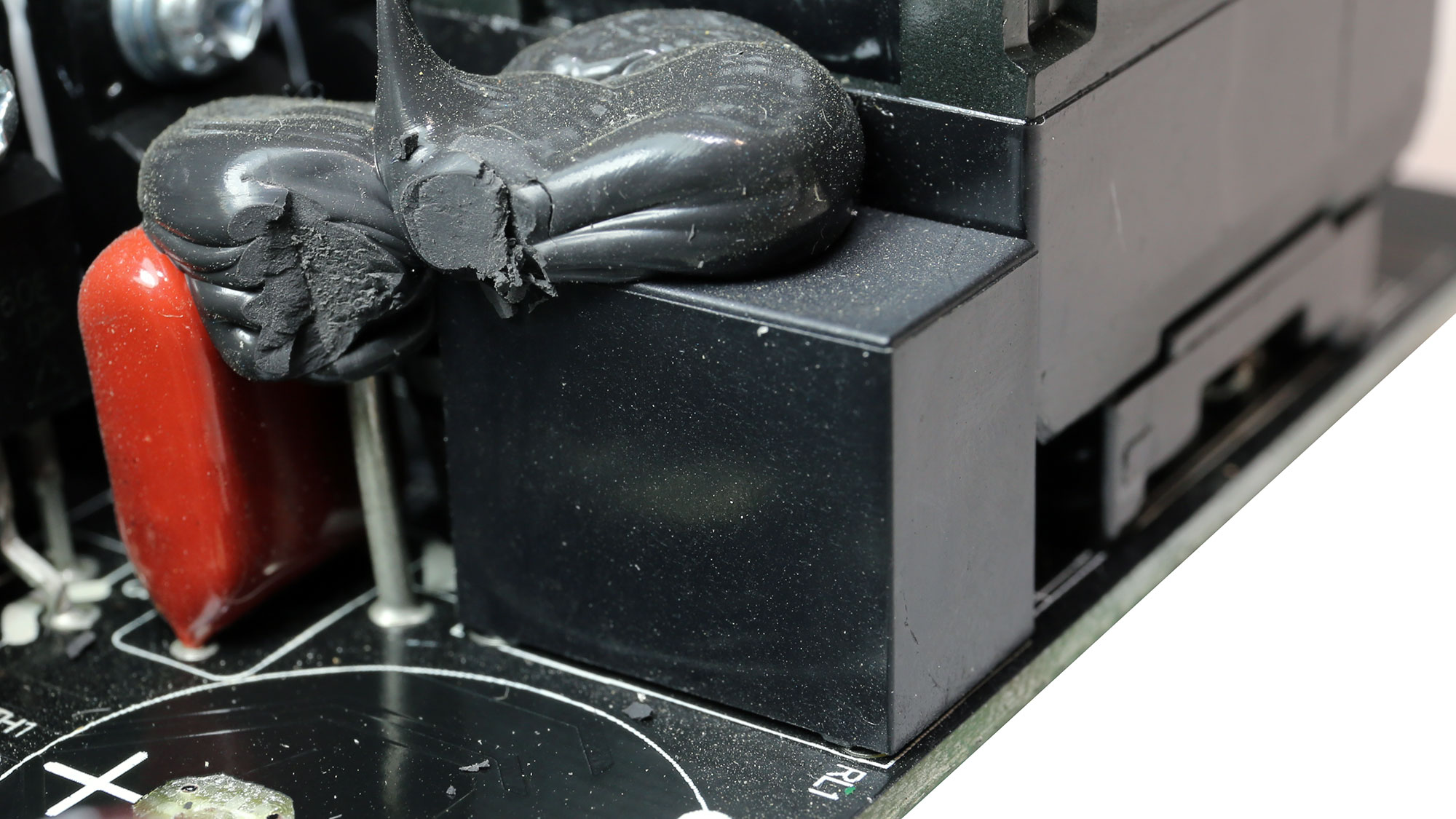
The EMI filter is complete with six Y and two X caps, two CM chokes, and an MOV. There is also an NTC thermistor for lower inrush currents, which is supported by a bypass relay.

Bridge rectifiers

The two bridge rectifiers are powerful, able to handle 40 Amps combined!

APFC converter
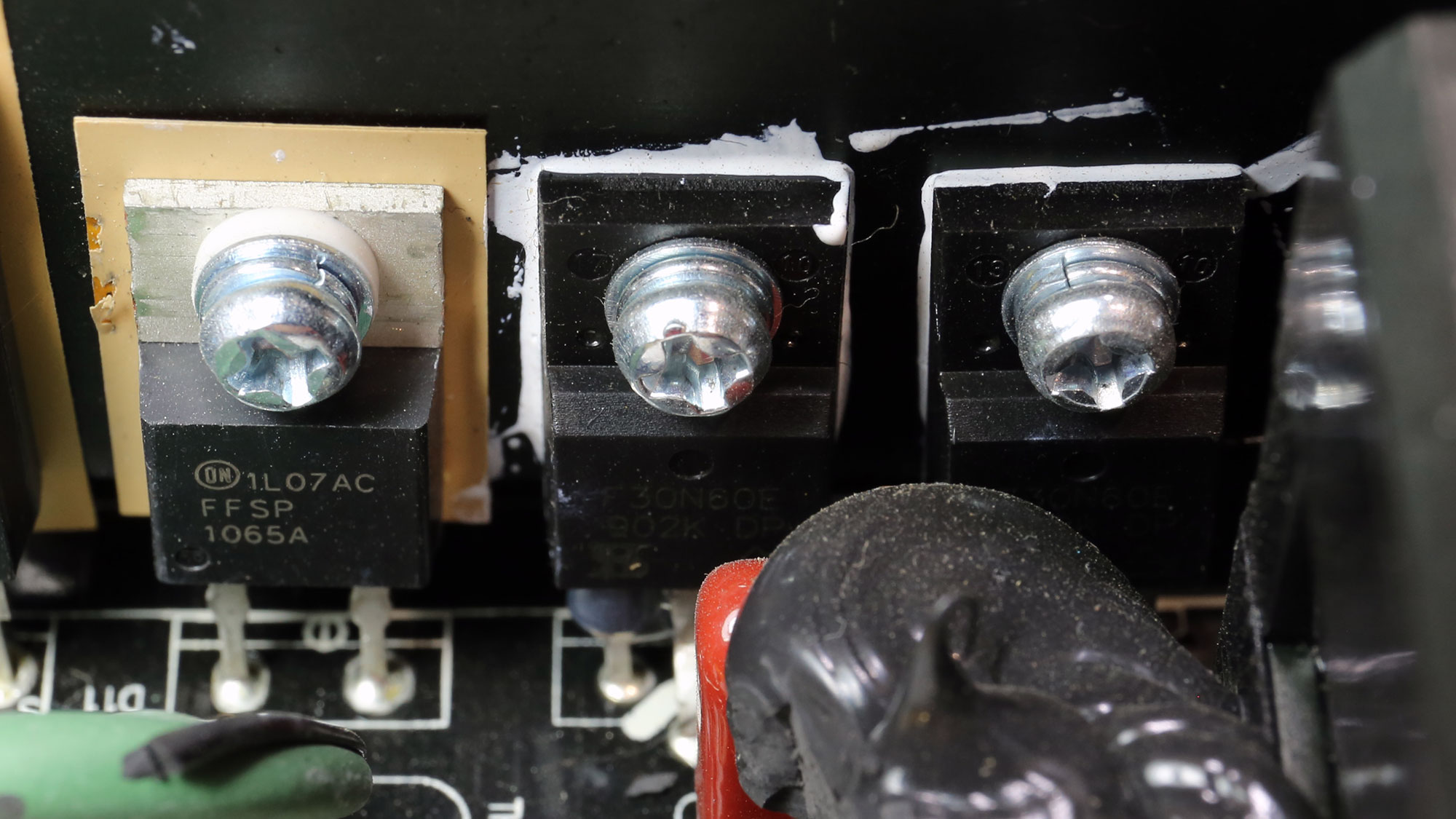
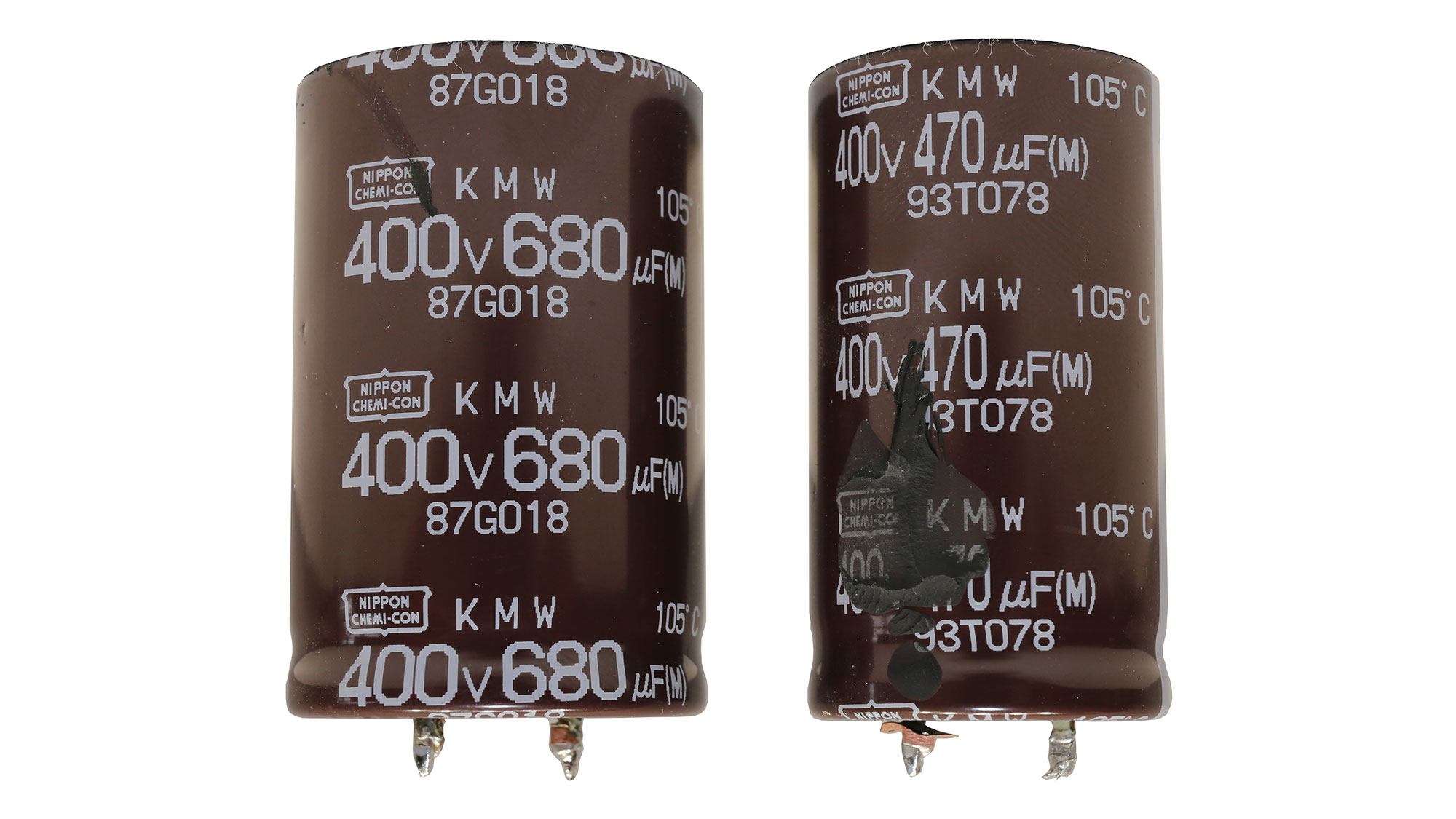

The APFC converter uses three Vishay FETs and a single but powerful boost diode. Chemi-Con provides the bulk caps. Combined, they have 1150uF capacity.
The APFC controller is a Champion CM6500UNX IC, supported by a CM03X.
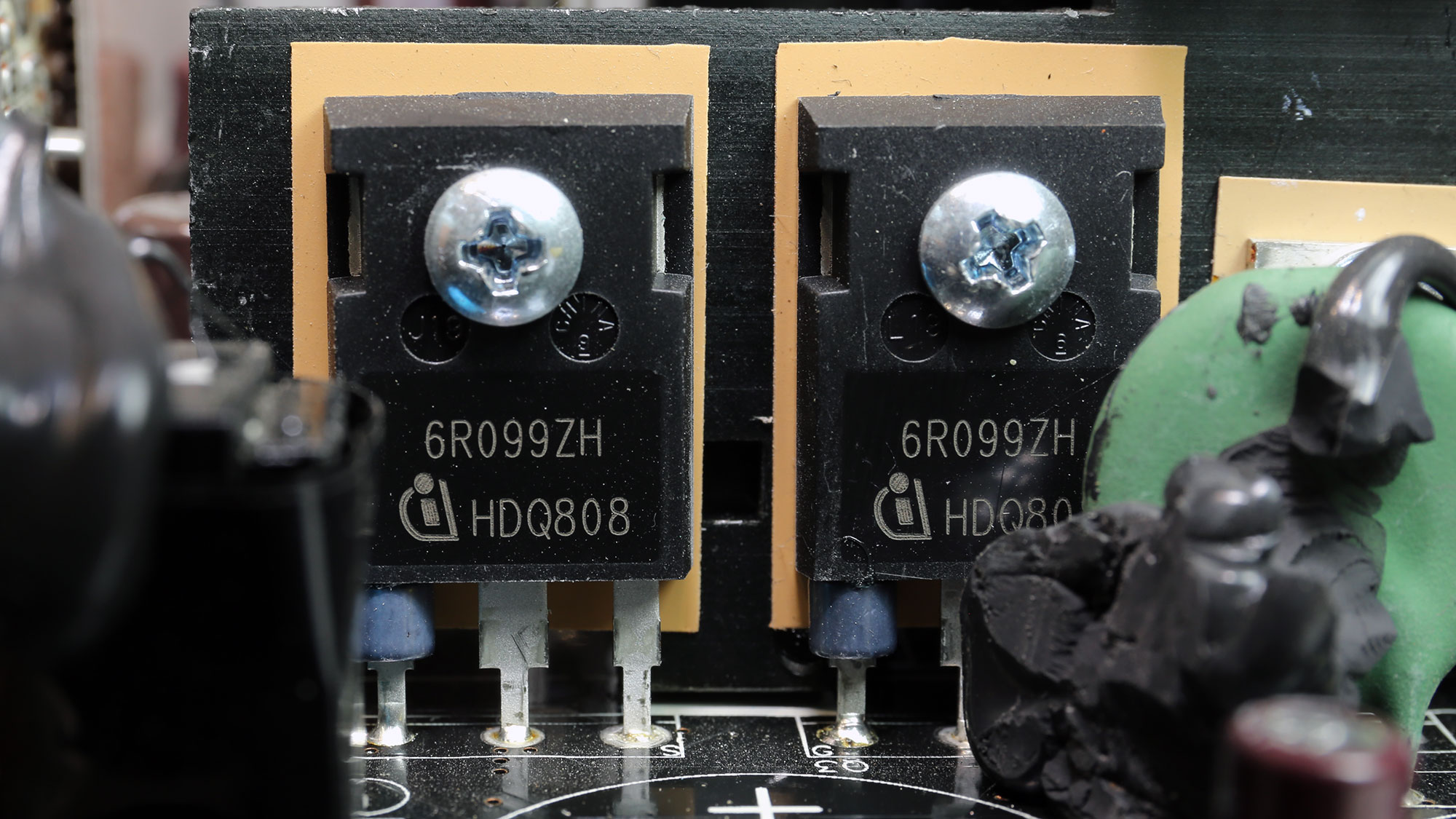
Main FETs and primary transformer

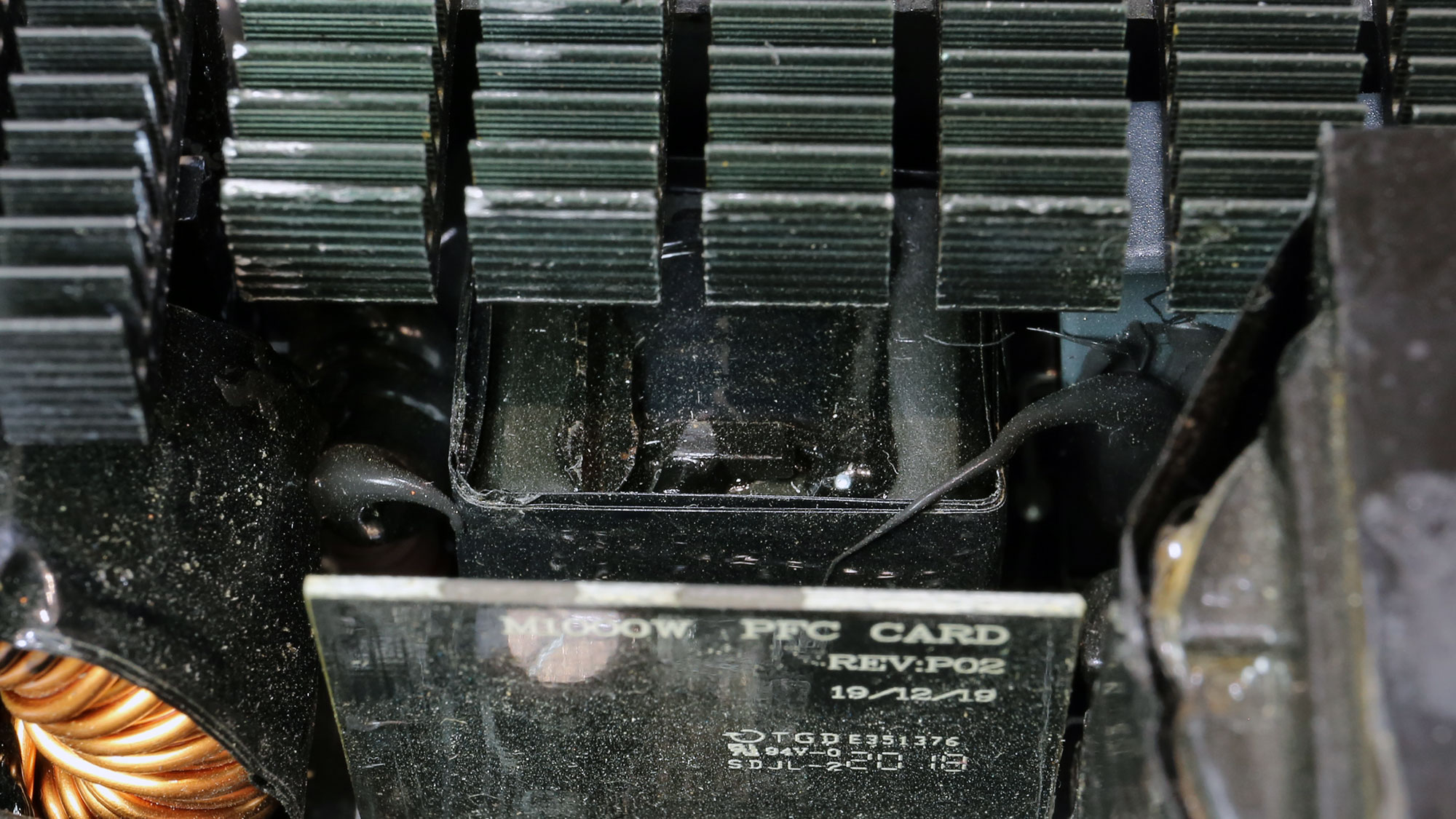
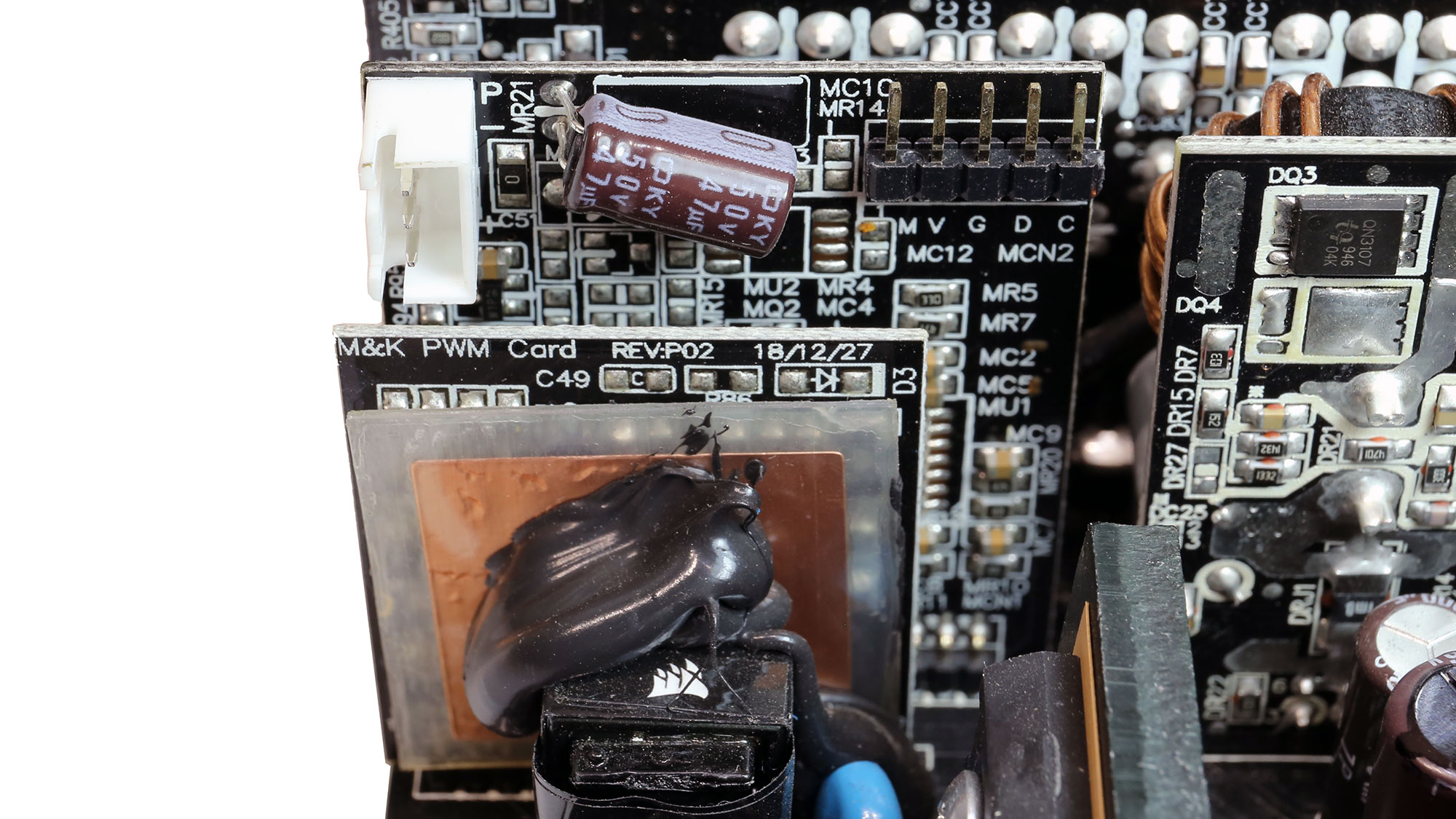

The primary switching FETs are two Infineon IPW60R099C6, configured in a half-bridge topology. The LLC resonant controller is a Champion CU6901VAC.
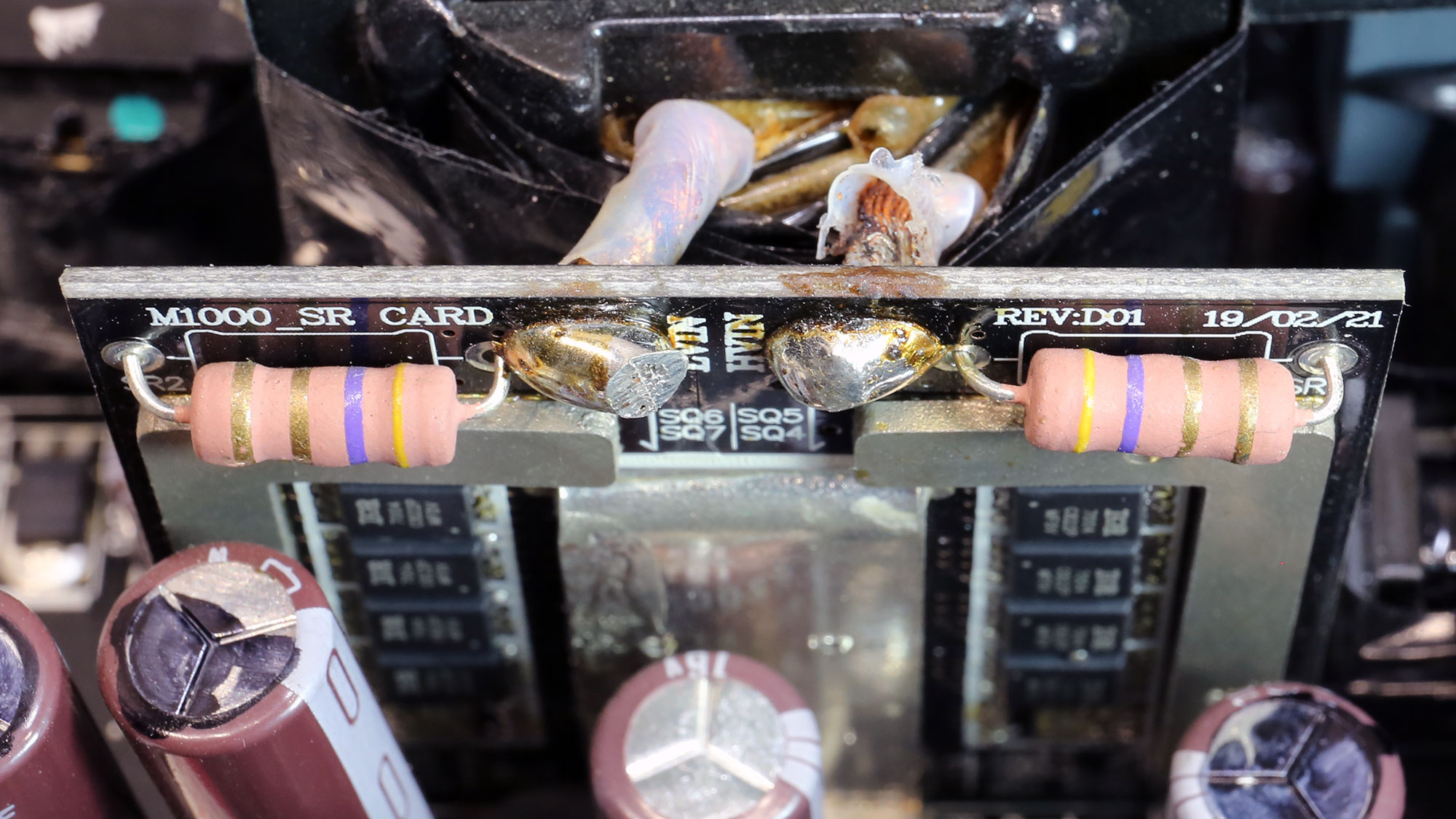
12V FETs and VRMs
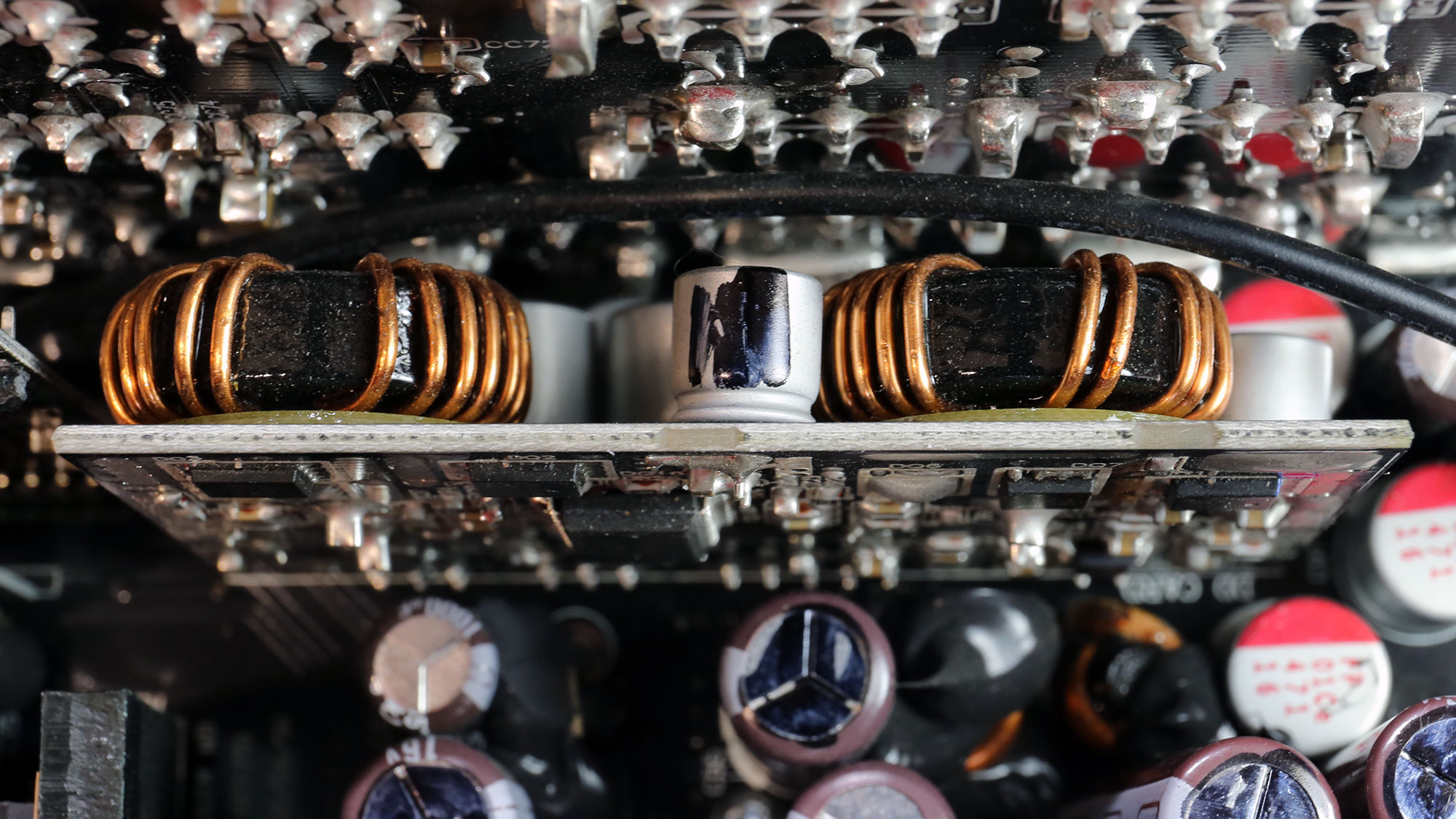
Eight Intenational Rectifier IRFH7004PbF FETs regulate the 12V rails. The FETs are installed on a vertical board, residing right beside the main transformer.
The VRMs, responsible for generating the minor rails, use four FETs and the common PWM controller is a UPI Semi uP3861P.
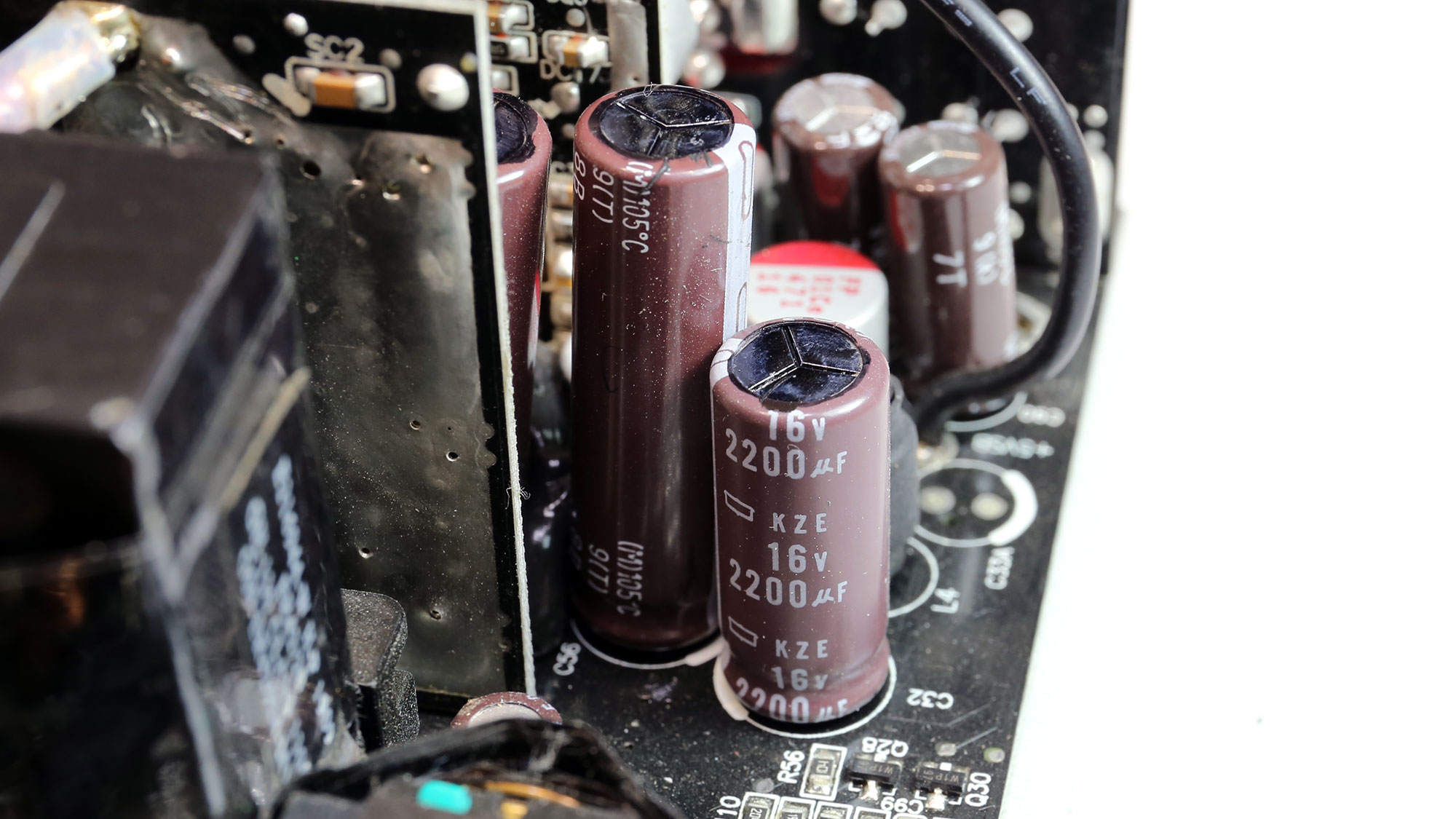
Filtering caps
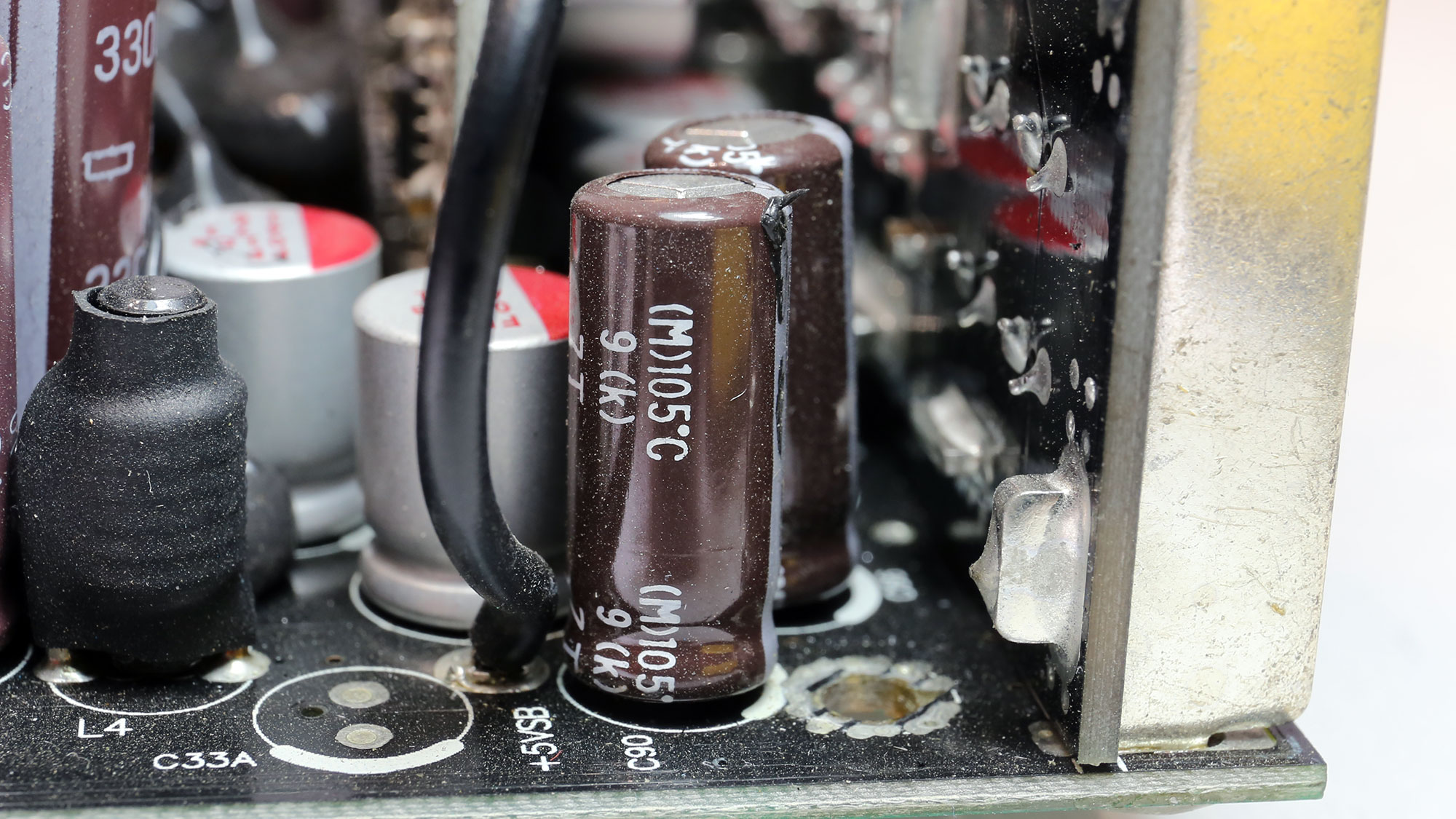

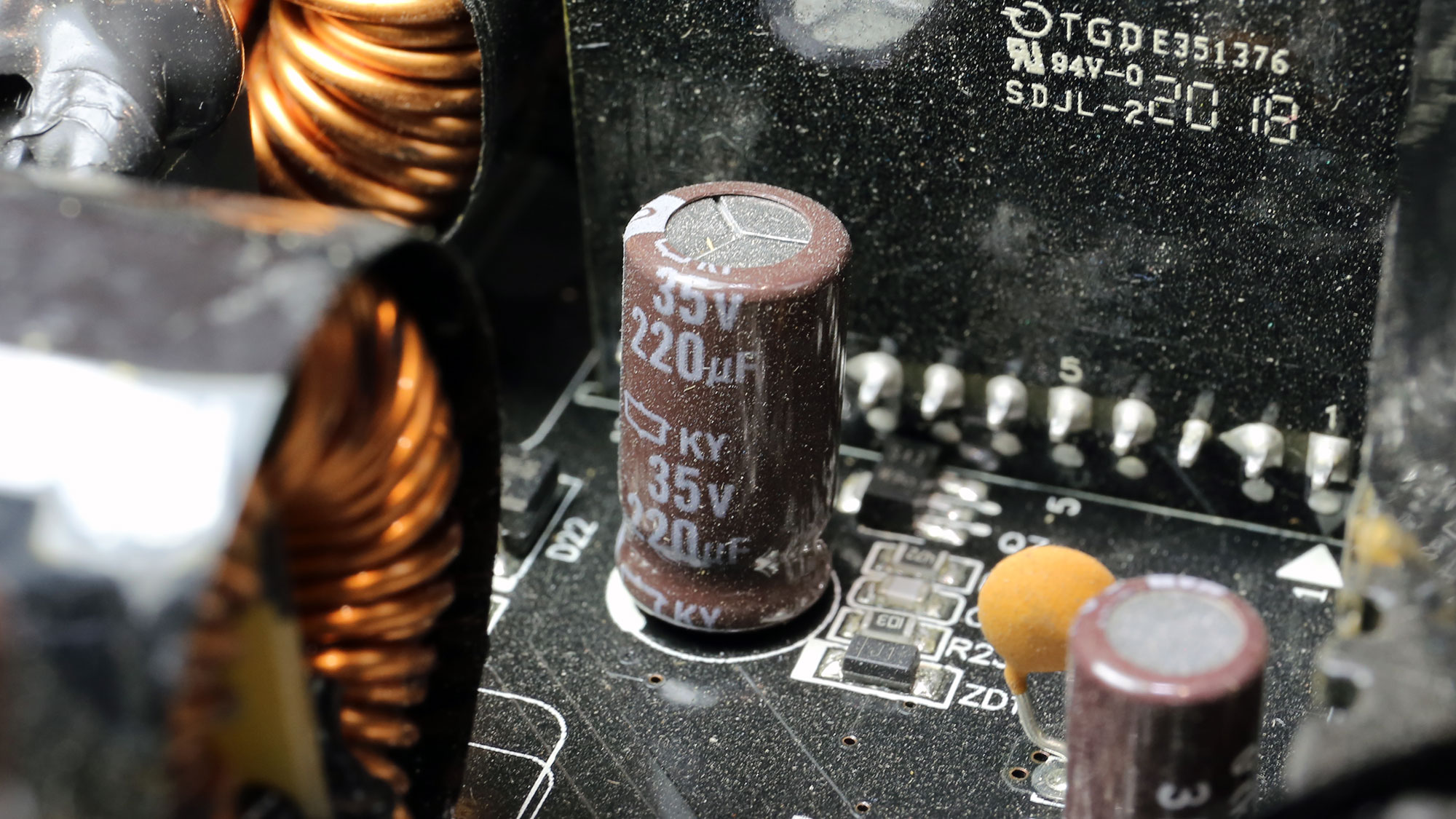
All electrolytic filtering caps are provided by Japanese manufacturers, Chemi-Con and Rubycon, and are rated at 105 degrees Celsius. Lots of FPCAP polymer caps are also used.

Modular board front
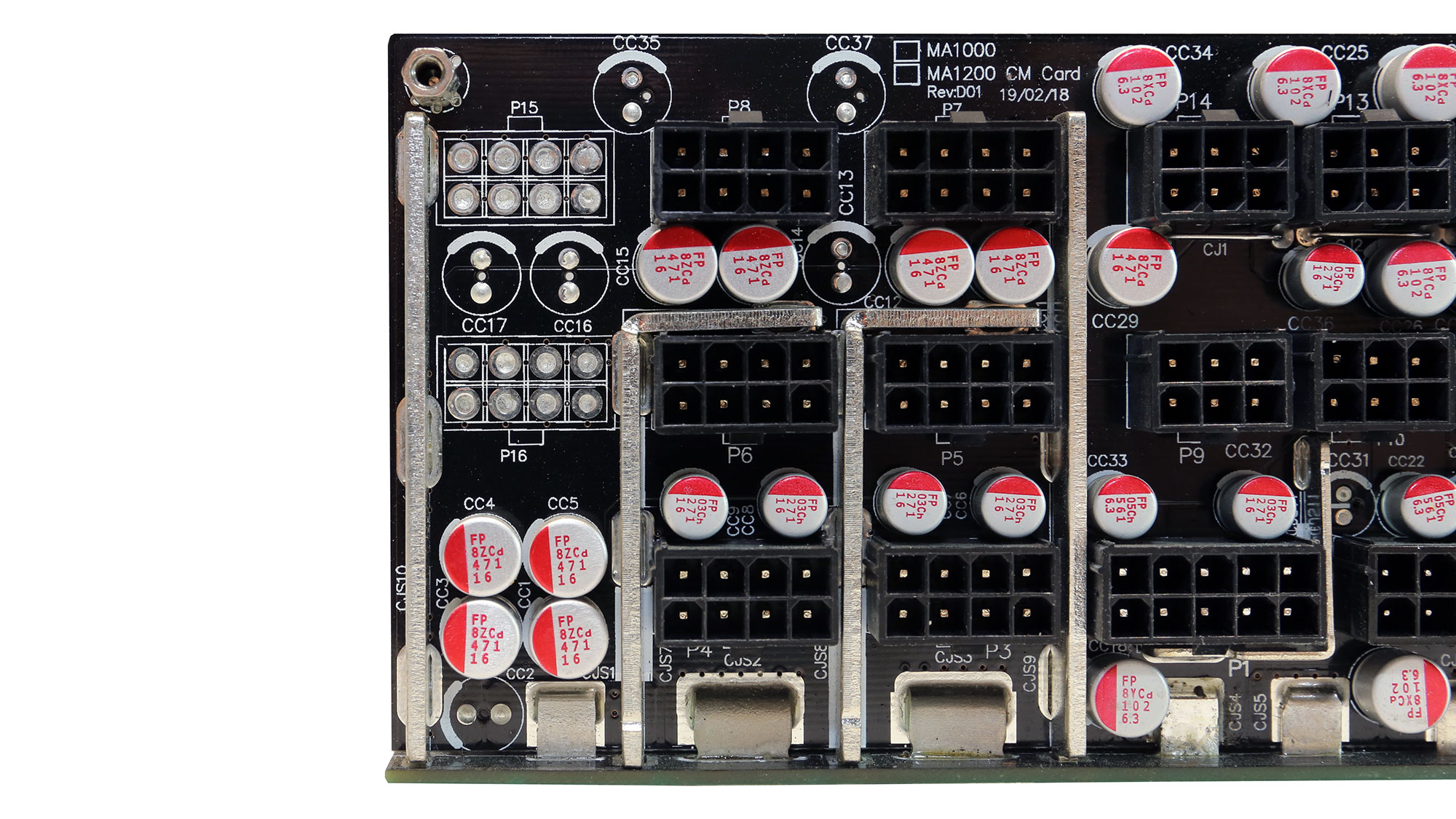
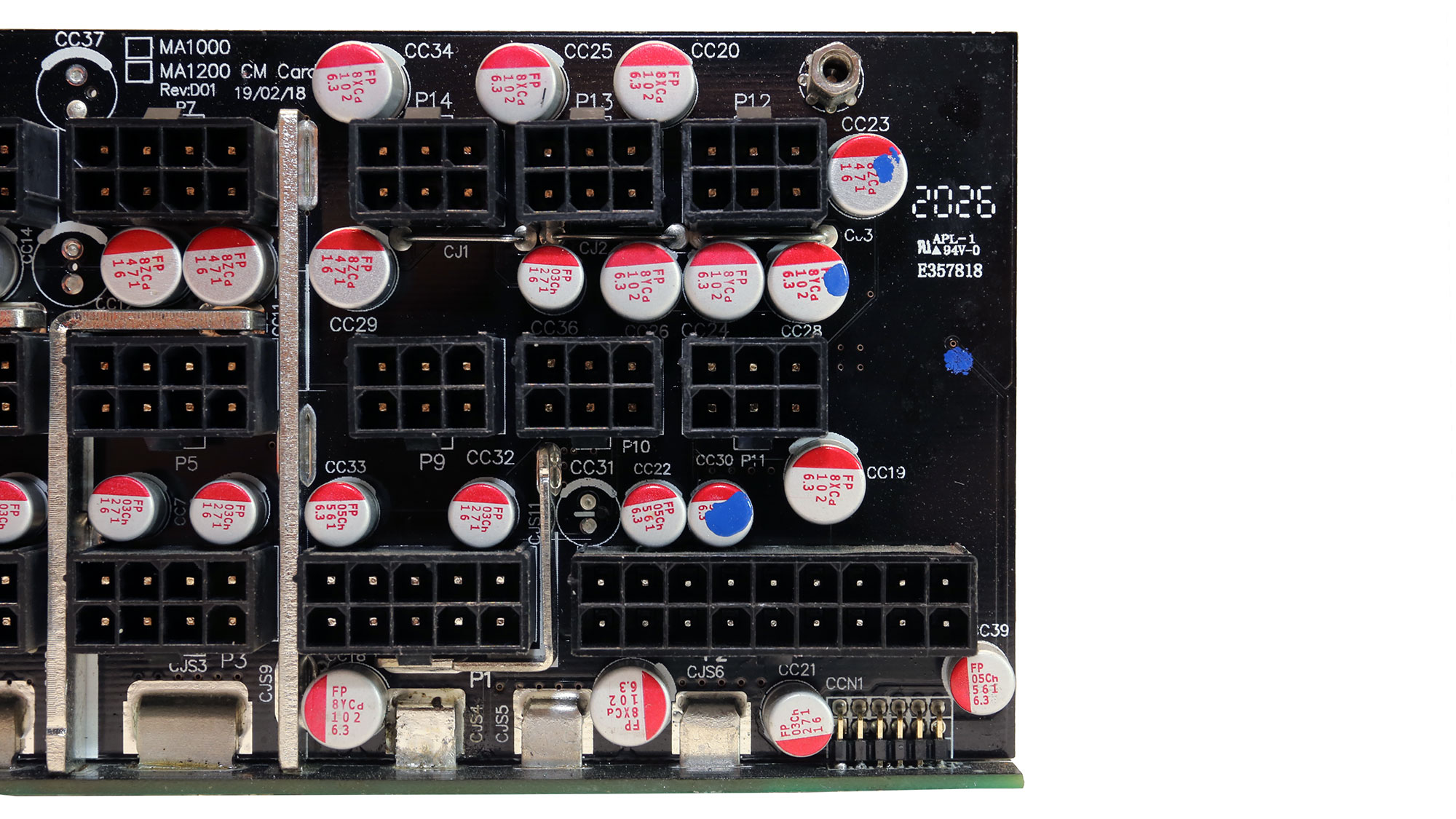
Many polymer caps are installed on the modular board, forming an extra ripple filtering layer.

5VSB circuit
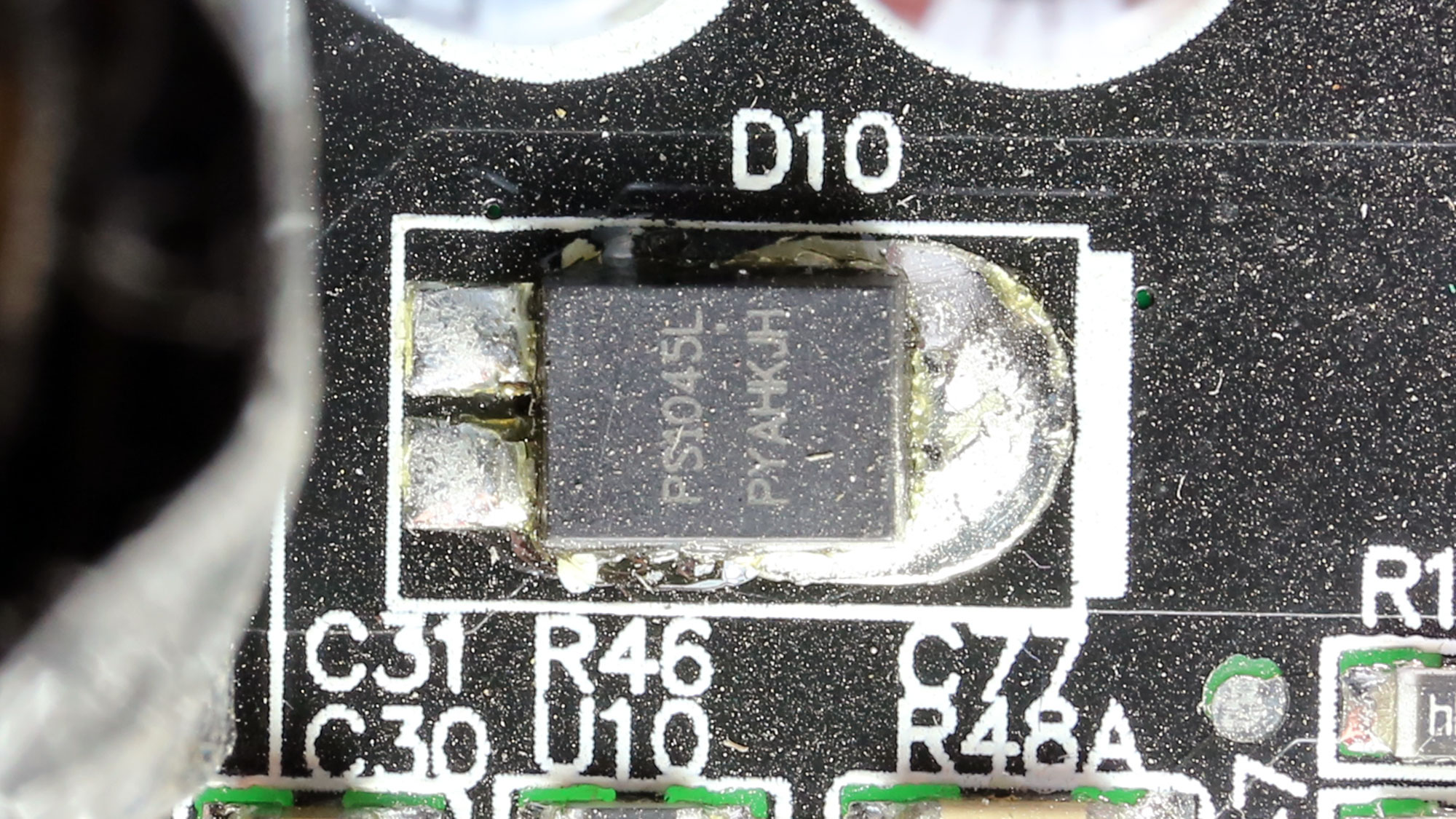
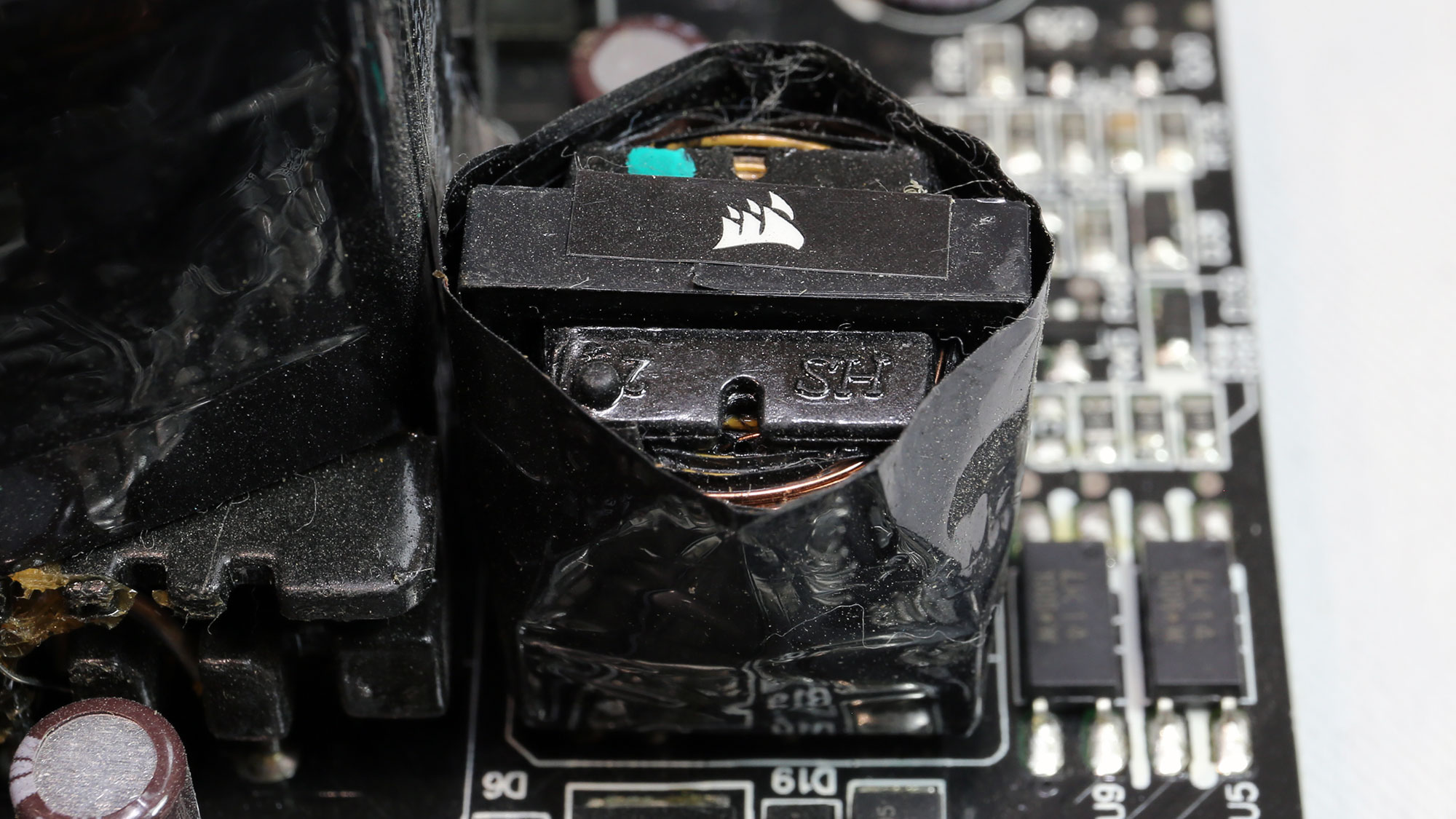

The 5VSB circuit uses a pair of SBRs, and the standby PWM controller is an On-Bright OB5282.

Soldering quality

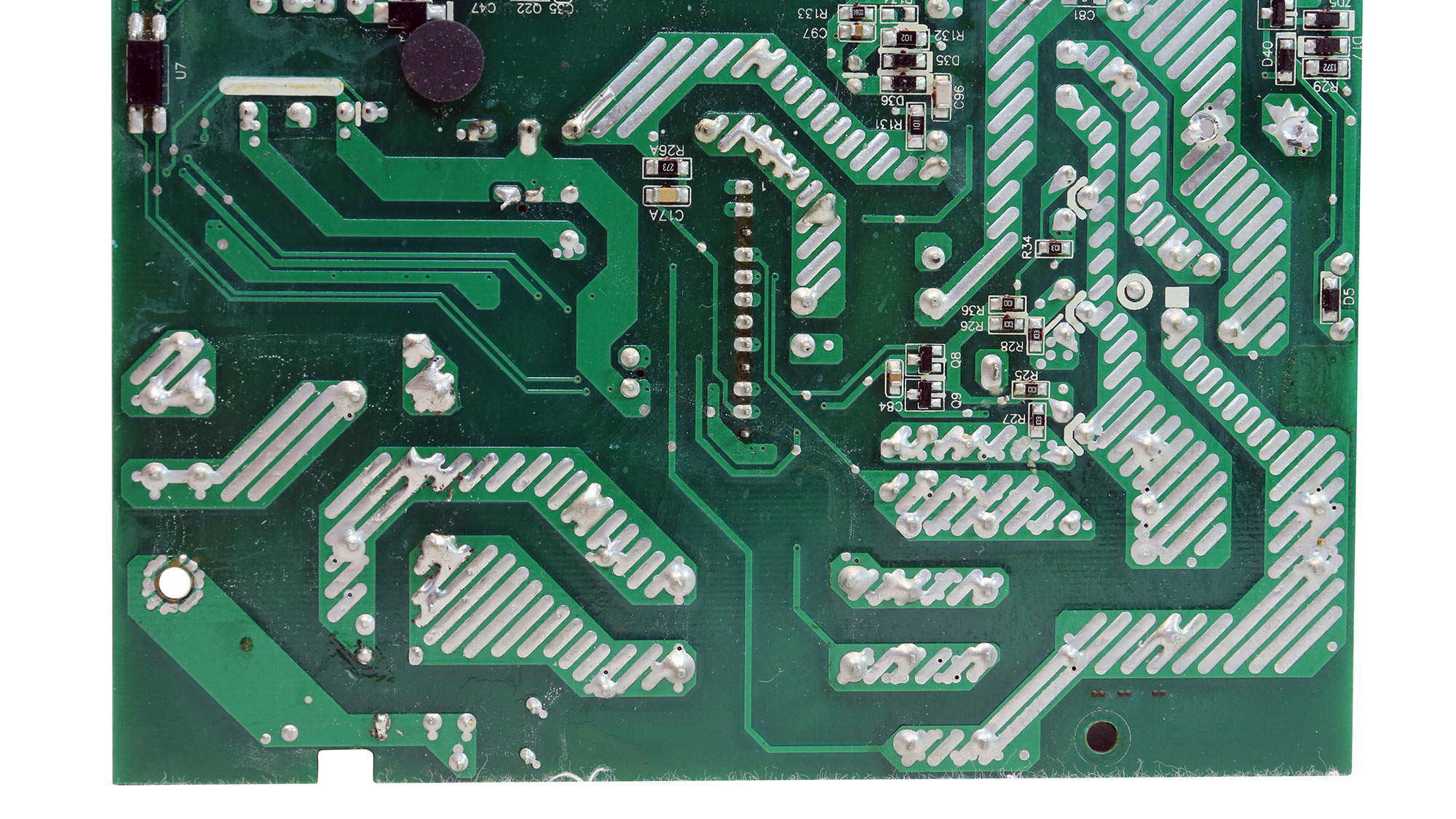
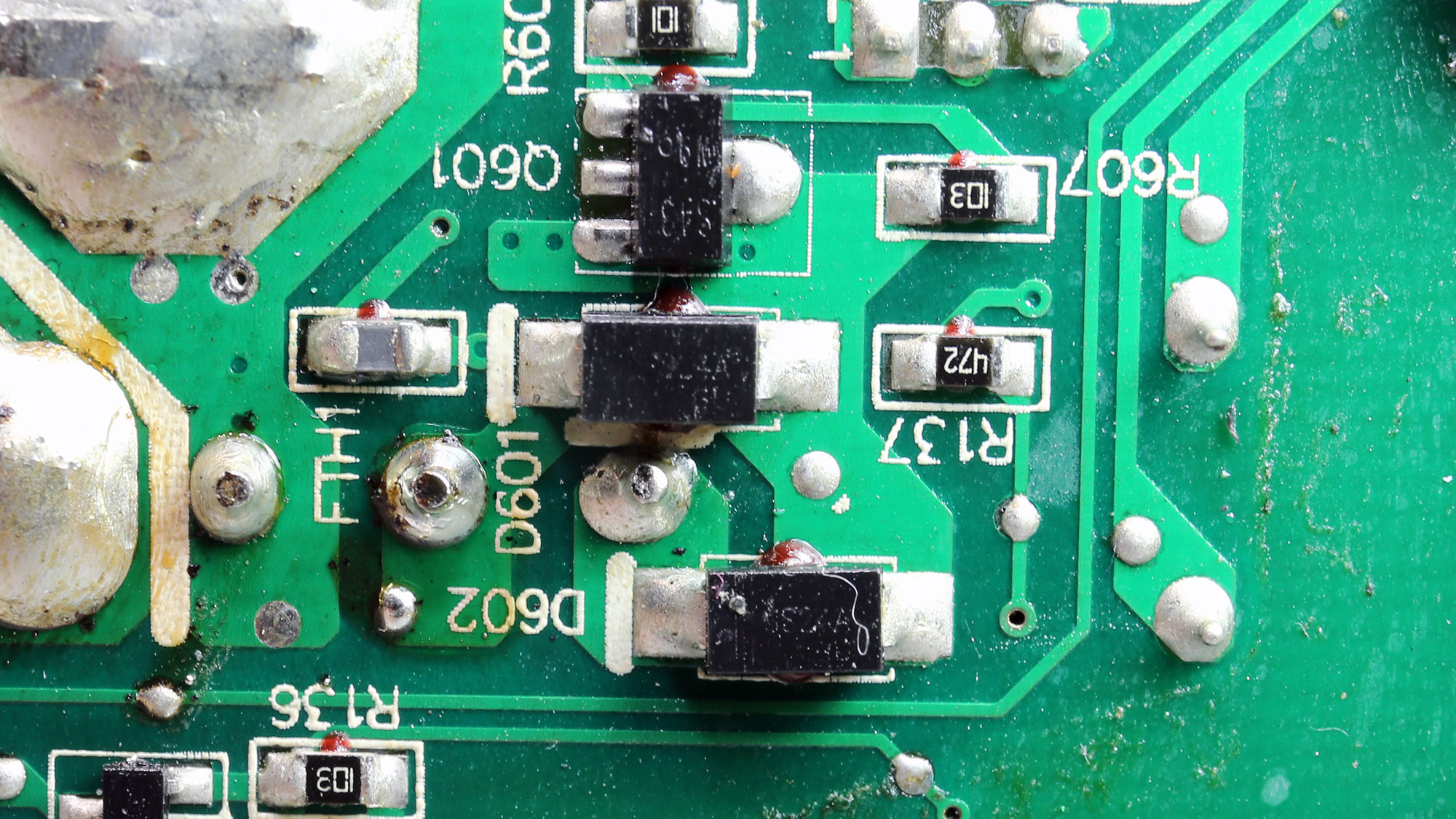
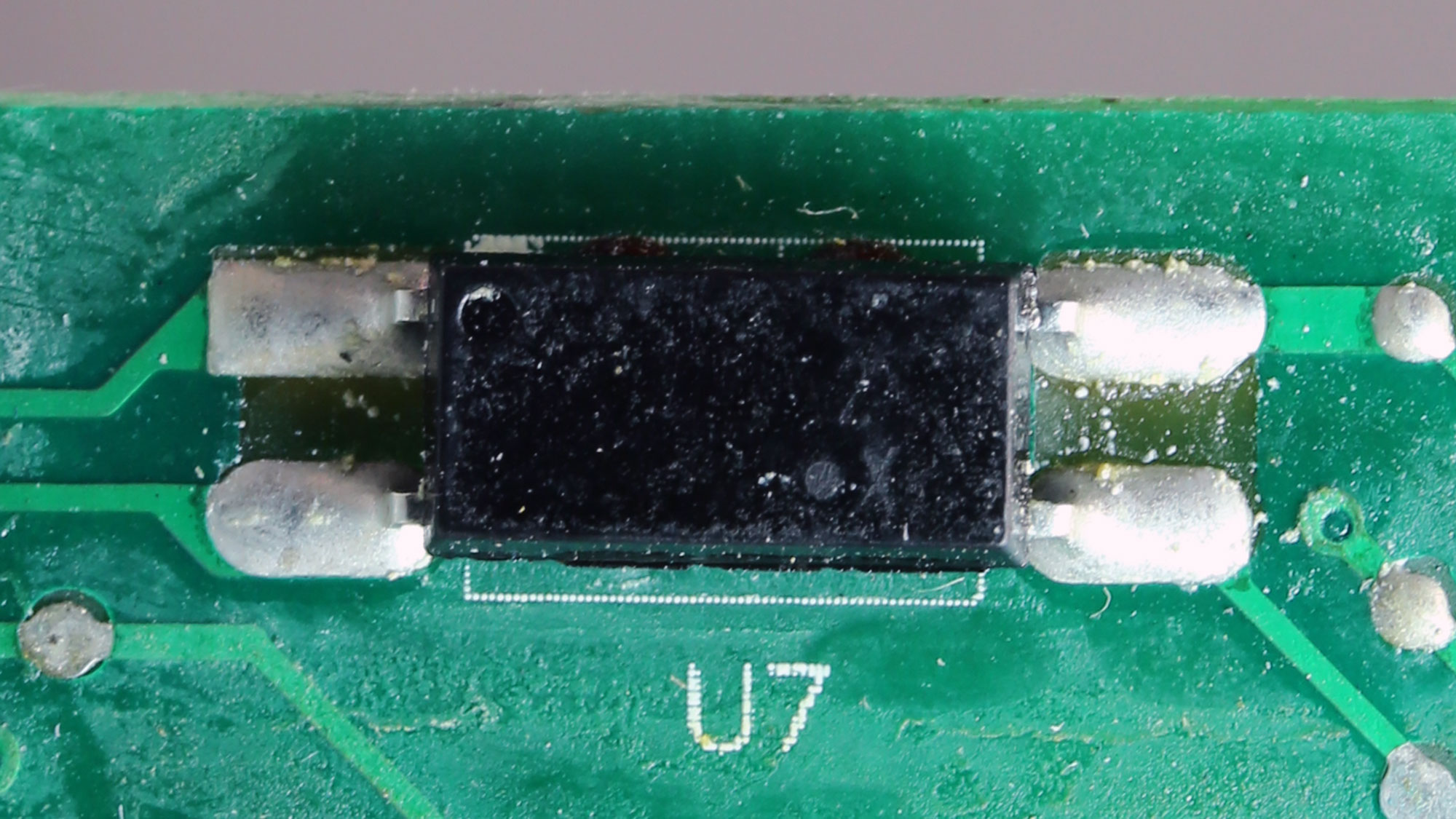
Soldering quality is not that good. This looks more than a pre-production unit than a mass production one. Most likely, our review samples are among the early ones.

Cooling fan
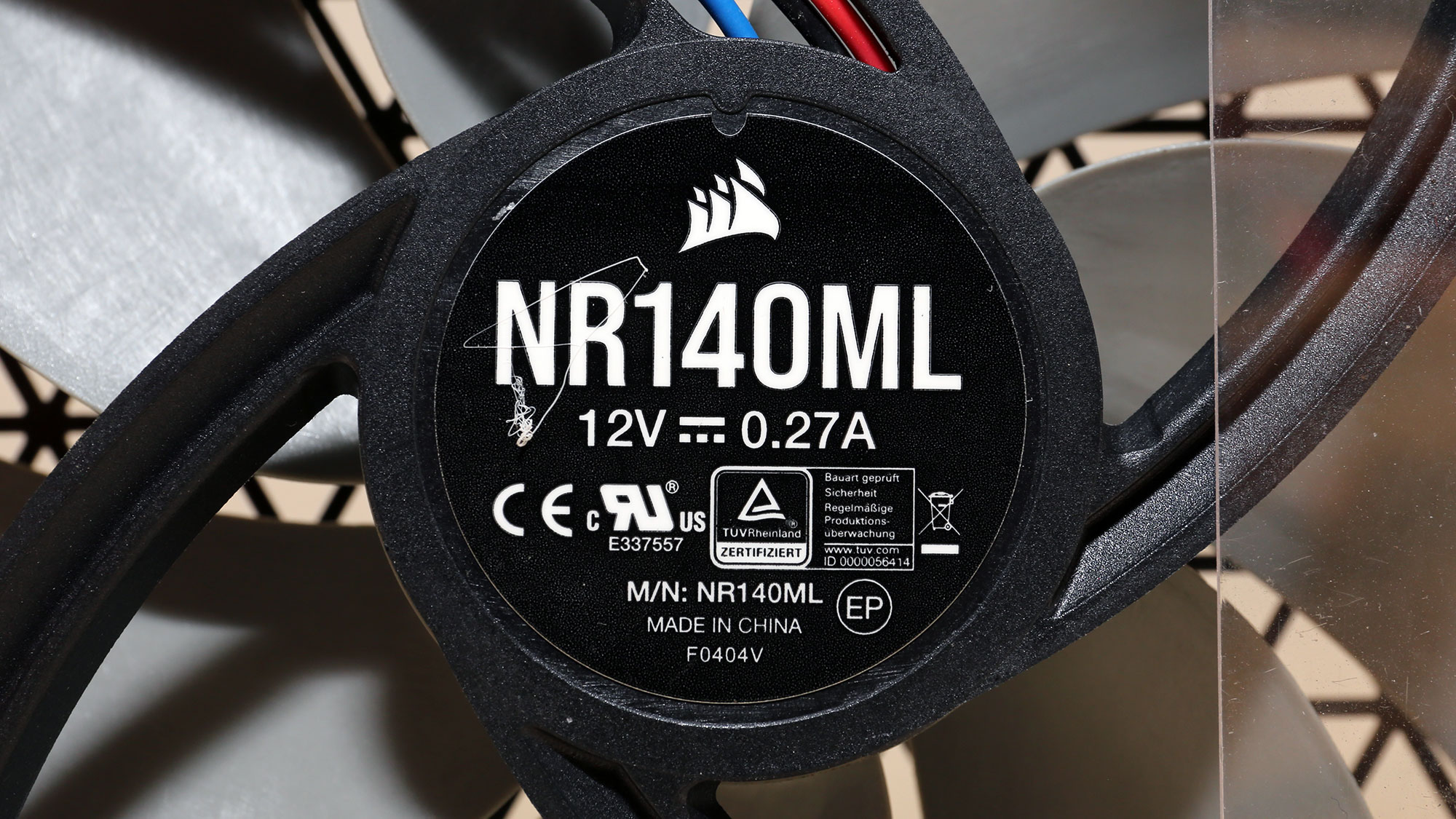

The cooling fan uses a Magnetic Levitation bearing to last for ages, even under high operating temperatures. This is one of the best fan bearings, if not the best, but expensive and not easy to manufacture. A vertical board holds the fan's controller and the supervisor IC.
MORE: Best Power Supplies
MORE: How We Test Power Supplies
MORE: All Power Supply Content
Current page: Specifications and Part Analysis
Next Page Load Regulation, Hold-Up Time, Inrush & Leakage Current, Efficiency and Noise
Aris Mpitziopoulos is a contributing editor at Tom's Hardware, covering PSUs.
-
werther595 I see in this article that you compare specs with the Superflower Leadex V Pro 1000W. Will there be a review of that unit coming out? Or is there one that I have missed?Reply
